Also see Mammals/insects/reptiles Fish Plants/Trees/Wildflowers Birds/Birding Marine-nature
click for Peterson Natural History Field Guides
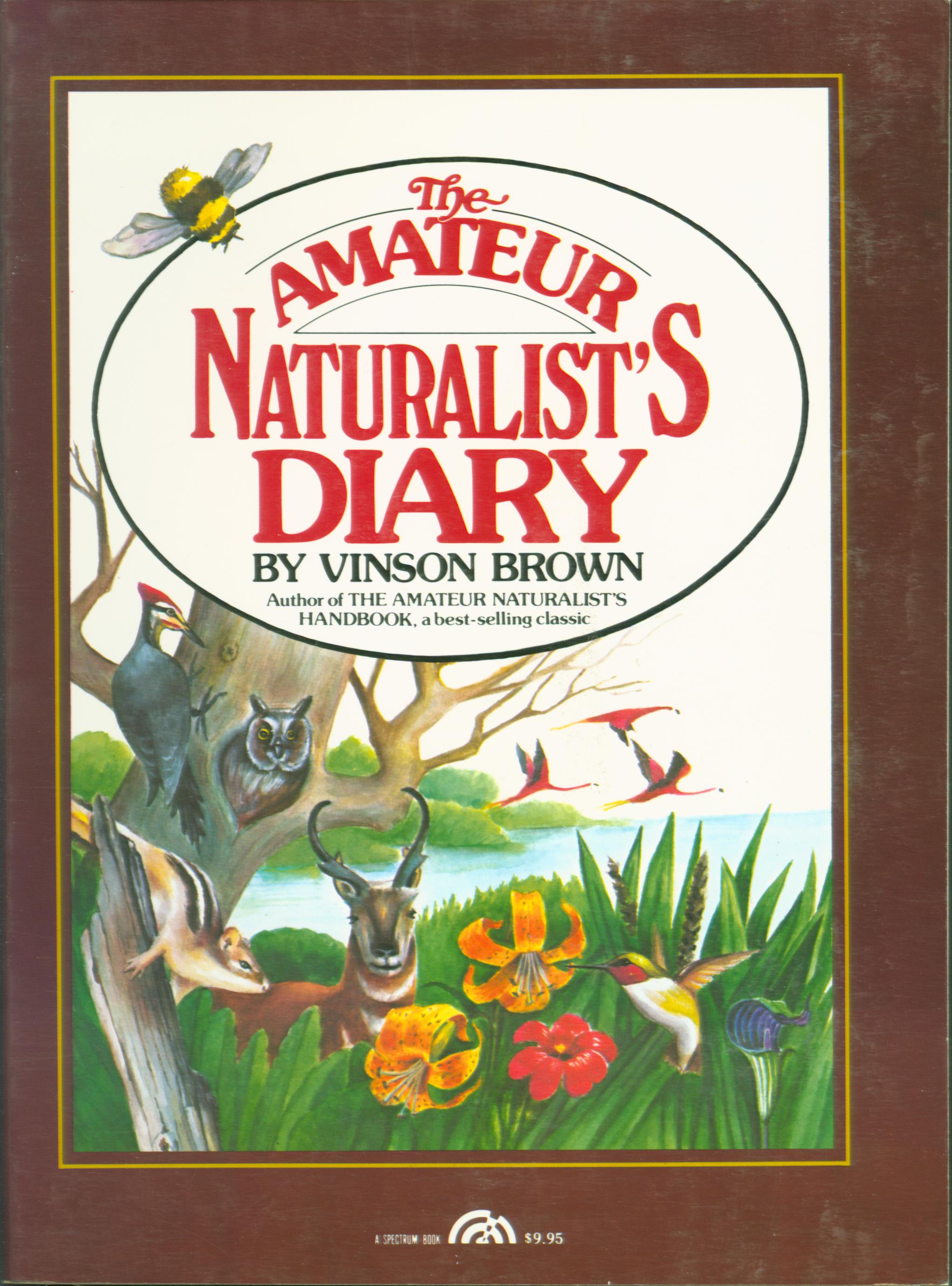 THE AMATEUR NATURALIST'S DIARY. by Vinson Brown.
THE AMATEUR NATURALIST'S DIARY. by Vinson Brown.
Provides journal spaces to record entries and includes tips on what to look for month by month. Introduction explains how to become a naturalist, recounts famous naturalists and their accomplishments. Suggests making collections around a theme, make and record observations (such as in the blank spaces of this book), and to ask questions. 184 pages, bibliography.
ISBN: 0-13-023671-3. 1983. Order #: PRHA7729 paper$9.95.
 ATLANTIC AND GULF COASTS: Audubon Society Nature Guide. by William H. Amos and Stephen H. Amos.
ATLANTIC AND GULF COASTS: Audubon Society Nature Guide. by William H. Amos and Stephen H. Amos.
Comprehensive field guide to birds, plants, seashore creatures, fishes, whales,
and other natural wonders of North America's eastern shores. Includes birds; fishes, whales, and dolphins; insects and spiders; mammals; reptiles and amphibians; seashells; and seashore creatures. Color photos, 6781 pages, index. ?PAGES
ISBN: 0-394-73109-3. Order #: RAHO2721 paper$19.00.
 ANTARCTICA: the last unspoiled continent. by Laurence Pringle.
ANTARCTICA: the last unspoiled continent. by Laurence Pringle.
Introduction to the ice, life, and human
use of this land at the south pole. Two-thirds of the Earth's water is locked here in frozen glaciers,. Covers claims of territory by nations, wildlife including penguins and whales, operation of science bases and research projects. Color photos, 56 large-format pages, index.
ISBN: 0-671-74181-0. Order #: SISC6011 cloth$15.00.
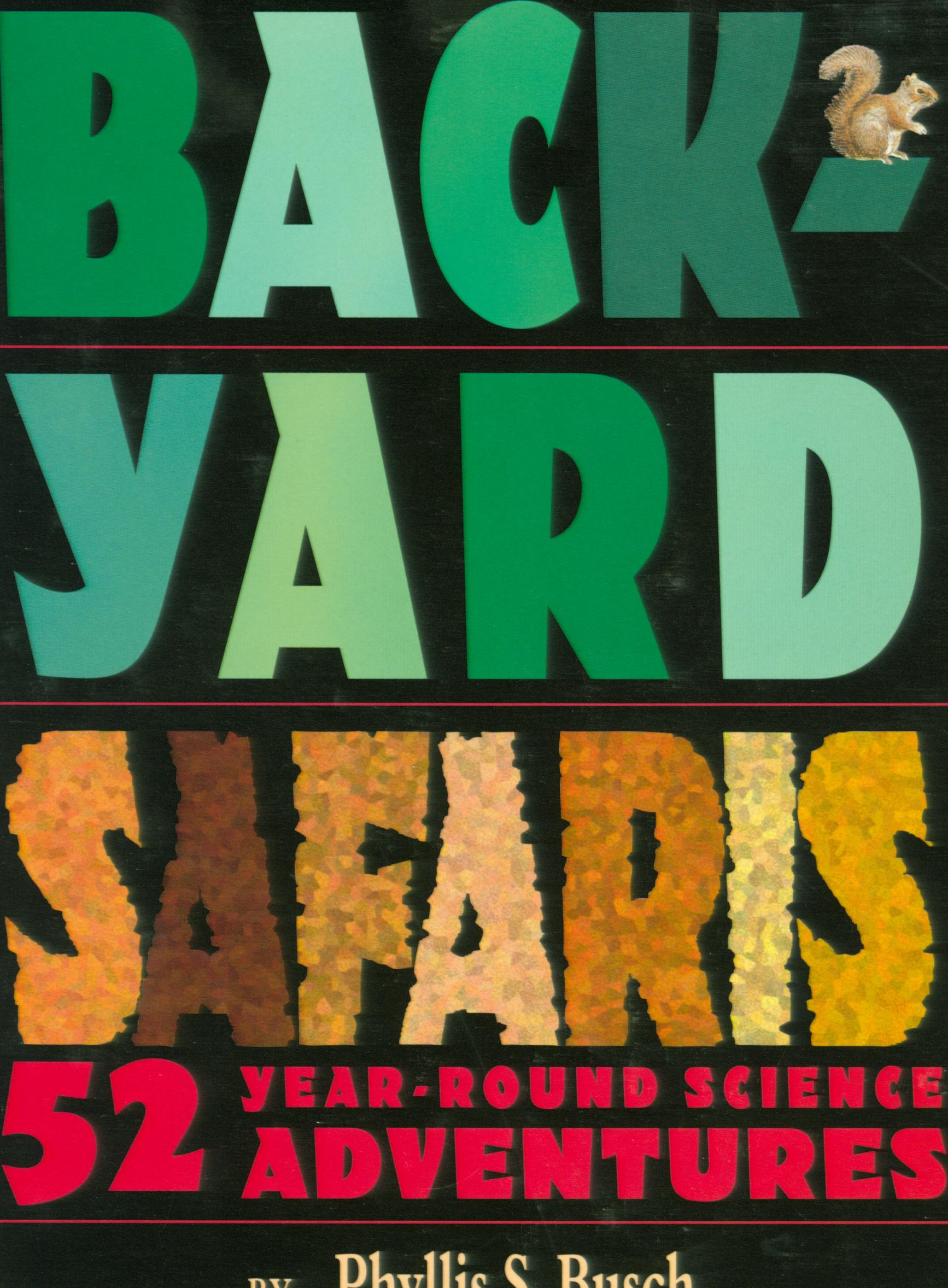 BACKYARD SAFARIS: 52 year-round science adventures Busch.
BACKYARD SAFARIS: 52 year-round science adventures Busch.
Discovering the wonders of nature, close to home, with activities for every week of the year--see the snowflake crystal, find an earthworm, understand clouds, watch spiders balloon. For children. Illustrated, 142 pages.
ISBN: 0-689-80302-8. Order #: SISC6180 cloth$16.00.
 BATTLE OF THE SEXES IN THE ANIMAL WORLD: the natural history of sex. by John Sparks.
BATTLE OF THE SEXES IN THE ANIMAL WORLD: the natural history of sex. by John Sparks.
Considers many aspects of sex in the natural world from courtship, copulation and conception, to family life and who is going to look after the baby. Sex in the natural world is aggressive, competitive, and sometimes fatal.
Observes there are differences in the genders preferences in selecting mates. How different animal species vary in family relationships. Includes patterns of sexual activity in varied animal types--insects, fish, birds, mammals, reptiles, and even sea creatures like barnacles and jellyfish. Asks why should there be such a wasteful, stressful and sometimes lethal activity as sex in the first place? Color photographs, 224 pages, index. See sample pages, illustrations.
Inventory =
1. ISBN: 0-563-378145-8. 1999. Order #: MISC2752 cloth$25.99.
 BIG BEND--three steps to the sky. by Frank Deckert.
BIG BEND--three steps to the sky. by Frank Deckert.
Human and natural history of this
national park in Texas: river, desert, and mountain environments. Character of the Rio Grande as it makes its big arc defining the US/Mexico border and how the river carved this path. Story of early Indians who lived here and of more recent people. Adaptations of plants and animals to an arid and hot environment. Exploration of the river and region by Spanish and , later, American surveyors. History of bandits and settlers. Map, 50 color photos, 44 large-format
pages.
ISBN: None. 1981. Order #: BIBE0177 paper$6.95.
 THE BIG BURN: the Northwest's fire of 1910. by Stan Cohen and Don Miller.
THE BIG BURN: the Northwest's fire of 1910. by Stan Cohen and Don Miller.
Story of the dry summer that led to numerous fires in the west and especially Idaho and Montana. About 3 million acres burned. If the timber lost could have been placed on freight cars, the train would have been 2,400 miles long. At least 85 humans perished in the fires of whom 75 were fire-fighters, most in one national forest. Stories are told of persons taking refuge in a tunnel, of submerging in a creek, towns being burned, wildlife killed. The army was called in to assist and civilians were recruited. This history of big fires is not unique but happens in an occasional recurring pattern, yet it is realized that fire produces habitat effects that offset the destruction. The book's message is amplified by dozens of historical photographs taken during and after the fires that show the extent of the fire's effects. 88 pages.
ISBN: 0-933126-04-2. 1983. Order #: PIHI2791 paper$12.95.
#BINOCULARS AND ALL PURPOSE TELESCOPES. Paul.
Guide to which ones to get for specialized
purposes, how they work, and what they can do for you in astronomy, hiking, hunting,
nature study, travel, telephotography. Photos, 96 pages.
ISBN: 0-87814-3558-1. Order #: MISC3927 cloth$11.95.
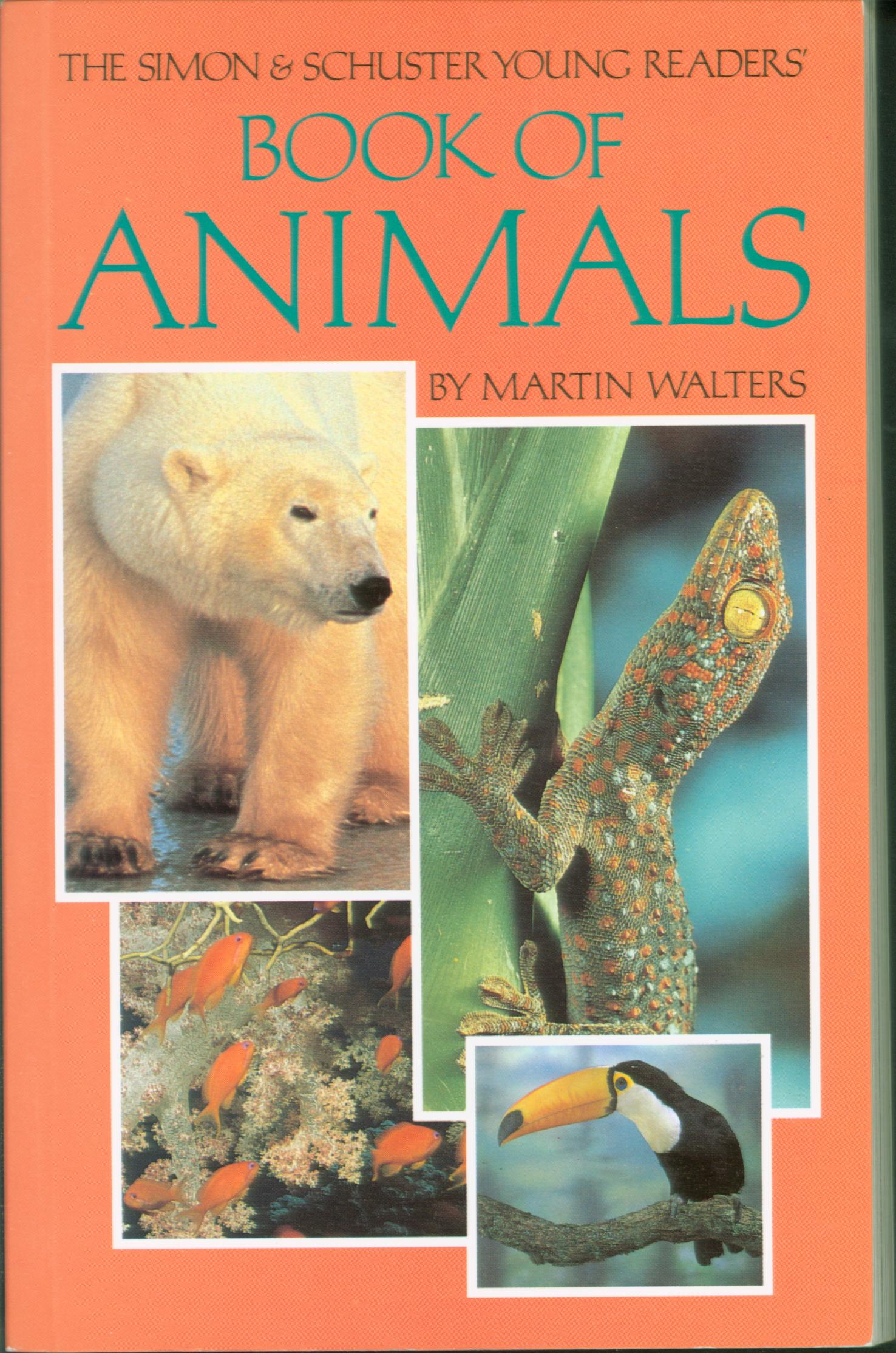 BOOK OF ANIMALS (THE SIMON & SCHUSTER YOUNG READERS'). by Walters.
BOOK OF ANIMALS (THE SIMON & SCHUSTER YOUNG READERS'). by Walters.
Facts about animal groups from the tiny protozoan to huge whales. Tells of shared characteristics of form and behavior as exemplified by species within the groups, such as insects, worms, fish, birds, mammals, reptiles. Explains body forms that provide advantages with dealing with the environments of the groups. A table lists all the groups (phyla) with the species contained within each, ranging from 2 to over a million. Glossary of animal terms, color
illustrations, 191 pages, index.
ISBN: 0-671-73129-7. 1990. Order #: SISC1346 paper$7.95.
 THE BOOK OF FIRE. by William Cottrell, Jr.
THE BOOK OF FIRE. by William Cottrell, Jr.
Beginning at the molecular level, The Book of Fire introduces
nonscientists to the anatomy of heat, ignition, and flame—progressing from how a
twig catches fire to how an entire forest burns. To help readers understand the
science of fire, William Cottrell illustrates combustion events that most people
are familiar with: a flickering candle, a smoldering campfire, a slowly cooking
marshmallow. He uses these illustrations to introduce readers to wildland fire
behavior, fire types, and fuel levels—indispensable information for firefighters
and fire managers, as well as homeowners who live in the wildland-urban
interface. The Book of Fire is also a good resource for city dwellers who
want to know the contents of smoky air or understand what really happened when
the local newspaper says a wildfire "made a run." A glossary contains the most
up-to-date terminology used by firefighters and fire managers. 80 pages.
ISBN: 0-87842-491-1. Order #: MOPR1123 paper$14.00.

THE BOOK OF FIRE. by William H. Cottrell, Jr.
Fundamental concepts show how energy from sun is captured and
stored by living cells, later released in fire. In simple words and vivid diagrams, this beautiful book elegantly explains the complex science of fire. 64 color illustrations, 80 large-format pages, glossary.
ISBN: 0-87842-255-2. Order #: MOPR3820 paper$6.95.
 CASCADE-OLYMPIC NATURAL HISTORY: a trailside reference. by Daniel Mathews.
CASCADE-OLYMPIC NATURAL HISTORY: a trailside reference. by Daniel Mathews.
Describes over 700 species of plants and animals in 623 pages, with drawings and color photos.
ISBN: 0-9620782-1-2. Order #: MOPR1118 paper$24.00.
 COASTAL ECOLOGY: Bodega Head--cloth. by Michael G. Barbour, Robert B. Craig, Frank R. Drysdale, Michael T. Ghiselin.
COASTAL ECOLOGY: Bodega Head--cloth. by Michael G. Barbour, Robert B. Craig, Frank R. Drysdale, Michael T. Ghiselin.
Ecosystems of shore headland north of San Francisco: grassland, rocky inter-tidal, beach and dune, mudflat, marsh. Describes samples of the organisms living in these habitats in relation to soil, sea, air, sun and other living things, including humans. Photographs and line drawings, 357 pages, index/.
ISBN: 0-520-02147-9 (Same as paper). 1973. Order #: UNCA1511 cloth$19.95.
 COASTAL ECOLOGY: Bodega Head--paper. by Michael G. Barbour, Robert B. Craig, Frank R. Drysdale, Michael T. Ghiselin.
COASTAL ECOLOGY: Bodega Head--paper. by Michael G. Barbour, Robert B. Craig, Frank R. Drysdale, Michael T. Ghiselin.
Ecosystems of shore headland north of San Francisco: grassland, rocky inter-tidal, beach and dune, mudflat, marsh. Describes samples of the organisms living in these habitats in relation to soil, sea, air, sun and other living things, including humans. Photographs and line drawings, 357 pages, index.
ISBN: 0-520-02147-9 (Same as cloth). 1973. Order #: UNCA1062 paper$12.95.
 COMMON SEASHORE LIFE OF SOUTHERN CALIFORNIA. by Hedgpeth.
COMMON SEASHORE LIFE OF SOUTHERN CALIFORNIA. by Hedgpeth.
Field guide. 10 color photos, 156 drawings and maps, 67 pages.
Inventory = 7; otherwise out of print. ISBN: 0-9611010-62-9. Order #: NAGR0969 paper$6.95.
 DARWIN'S DANGEROUS IDEA: evolution and the meanings of life. by Daniel C. Dennett.
DARWIN'S DANGEROUS IDEA: evolution and the meanings of life. by Daniel C. Dennett.
Demonstrates power of theory of evolution and how that idea impacts our traditional view of our place in the
universe. Darwin's idea of evolution by natural selection has been the focus of controversy for more than a century. Here current controversies are laid out about the origin of life, punctuated equilibrium, sociobiology the evolution of language and culture, and evolutionary ethics. Exposes philosophical--even religious--yearnings that have distorted disputes among scientists and laypeople alike and challenges the view of some famous scientists. Illustrated, 587 pages.
ISBN: 0-684-80290-2. 1995. Order #: SISC6088 cloth$30.00.
 DEGREES OF DISASTER: Prince William Sound--how Nature reels and rebounds. Wheelwright.
DEGREES OF DISASTER: Prince William Sound--how Nature reels and rebounds. Wheelwright.
Reports Alaska's environmental upset when an oil tanker spilled. 348 pages.
ISBN: 0-671-70241-6. Order #: SISC6878 cloth$24.00.
 EARTHCLOCK: a narrative calendar of nature's seasons. by Anita Nygaard.
EARTHCLOCK: a narrative calendar of nature's seasons. by Anita Nygaard.
Philosophical musings and nature observations for every day of the year, in sequence, are arranged by time of year, by a naturalist. Along the span of time the author reflects on myriad animals and plants, historic events in the natural world, and even what to eat and what to do. 224 pages.
ISBN: 0-8117-0547-1. 1976. Order #: STAC5165 cloth$8.95.
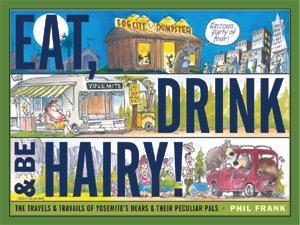 EAT, DRINK & BE HAIRY: the travels & travails of Yosemite's
bears & their peculiar pals. by Phil Frank.
EAT, DRINK & BE HAIRY: the travels & travails of Yosemite's
bears & their peculiar pals. by Phil Frank.
Every year four urbanized black bears make a
summer-long visit to Yosemite from San Francisco in Phil Frank's cartoon
strip 'Farley,' which appears daily in the San Francisco Chronicle.
Known as Bruinhilda, Alphonse, Franklin, and Floyd, the ursine quartet
members wreak devious havoc in Yosemite Valley and have become a thorn in
the side of the park rangers. Other Yosemite-related strips feature Velma Melmac
(an RV-loving camper from Manteca who abhors dirt), her assistant in a
campground cleaning business Lisa Ann, Velma's love interest Rhett, seasonal
ranger Farley, Charbeaver (an employee at the Fog City Dumpster), and even
former San Francisco mayor Willie Brown. This collection of nearly 300 hilarious cartoon
strips originally appearing between 1999 and 2004 is the second 'Farley' book
to be published by the Yosemite Conservancy. The first, Fur and Loafing in Yosemite, has
proven to be a classic favorite of park visitors and Yosemite lovers. The book includes a cast of characters, a map of the
annual migration route of Ursus corruptus, a wonderful schematic
drawing of Velma's Ark-A-Lounger motor home, and an inside view of the bears
in camp. 168 pages; 12 inches x 9 inches; illustrated in black
and white; paperback; copyright 2006, Yosemite Conservancy.
Inventory =1. ISBN: 1-930238-21-5. Order #: YOCO1287 paper$13.95.
 ENDANGERED ANIMALS: a Golden Guide. by George S. Fichter.
ENDANGERED ANIMALS: a Golden Guide. by George S. Fichter.
Surveys hundreds of species that are in trouble and describes many of the causes of endangerment and controversies surrounding laws to protect animals. Includes stories of efforts of people to rescue species and restore the balance of nature. For anyone concerned with animals and the future of life on our planet. Color paintings with 140 species in full color, appendix list of endangered animals, 160 little pages, index.
ISBN: 0-307-24501-2. 1995. Order #: WEST2521 paper$6.95.
 ENOS MILLS: Rocky Mountain naturalist (1870-1922).John Stansfield.
ENOS MILLS: Rocky Mountain naturalist (1870-1922).John Stansfield.
Enos Mills was a sickly boy who grew into a robust, busy man.
He was a naturalist, an author, a national park advocate, a public speaker, a
photographer, a businessman, a mountaineer and adventurer, a miner, and a
conservationist. The father of Rocky Mountain
National Park. Mills's abiding belief was that appreciation of and exposure to
nature were essential to the well being of an individual and a nation.
--from the Introduction.
ISBN: 978-086541-072-5. Order #: FILT5264 paper$8.95.
 ENVIRONMENT. by James Everest with Mario Lopez and Jordan Brady.
ENVIRONMENT. by James Everest with Mario Lopez and Jordan Brady.
A Name Your Adventure title for youths to understand Earth and its biology. Where is brain coral, teaching tricks to dolphins, finding tallest trees, learn about dinosaurs, checkout rain forests. Illustrated with color photographs,
126 pages.
ISBN: 0-02-045475-9. Order #: SISC6039 cloth$5.95.
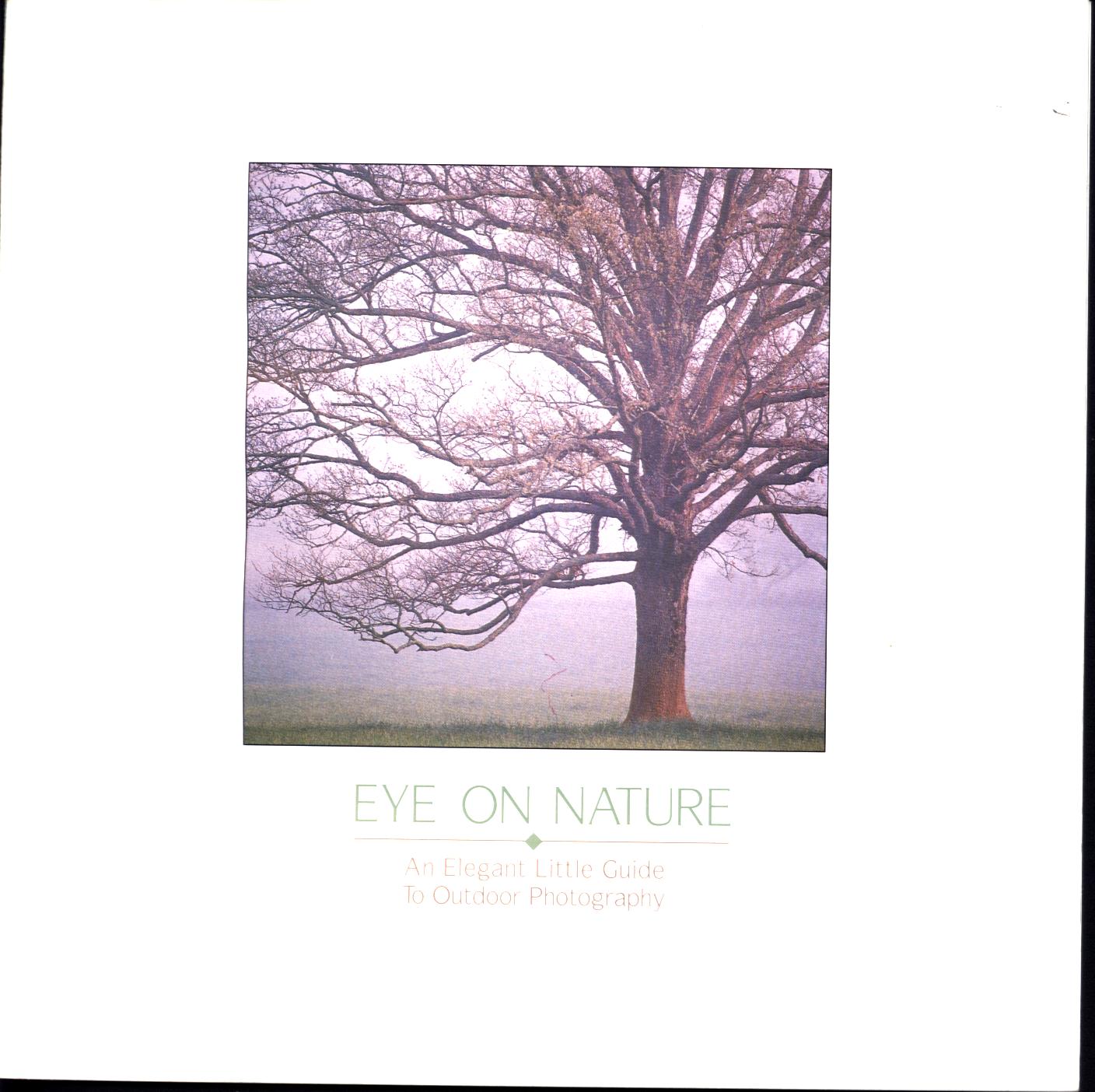 EYE ON NATURE: an elegant little guide to outdoor photography. by Judy Holmes.
EYE ON NATURE: an elegant little guide to outdoor photography. by Judy Holmes.
Tips by an accomplished outdoor photographer to help you make better scenes--lighting, composition, simplifying, tweaking, problems and solutions, cataloging, gear. Color photographs, 52 pages,
ISBN: 0-9651828-0. 1996. Covers slightly wrinkled. Order #: MISC2710 paper$7.95.
 FIELD GUIDE TO OUTDOOR PHOTOGRAPHY. by C. Boyd Pfeiffer.
FIELD GUIDE TO OUTDOOR PHOTOGRAPHY. by C. Boyd Pfeiffer.
For all who wander afield--a quick reference for bringing all the good times home. Presents techniques for photographing flowers, birds, animals, landscapes, and candid reminiscences of companions on the trail. Covers composition--secret of good and interesting pictures, lighting--various types for various effects, exposure--determining settings for great photos, making and improving accessories. Includes aspects of photography in hunting, fishing, camping, backpacking, climbing, and boating including details on building blinds and shutter releases, plus information on animal photography at night. Also includes advice on displaying photographs after taking them--framing, albums, and more. Photographs, 224 little pages for easy carrying in the field, index.
ISBN: 0-8117-2261-9. 1977. Order #: STAC2633 paper$7.95.
 THE FIELD GUIDE TO WILDLIFE HABITATS OF THE EASTERN UNITED STATES. by Janine M. Benyus.
THE FIELD GUIDE TO WILDLIFE HABITATS OF THE EASTERN UNITED STATES. by Janine M. Benyus.
Habitats each have their own special character--that's why they are habitats. Here 20 are described. Each has its own types of birds, reptiles, mammals, and
amphibians as well as the plants these animals dwell in and in many cases use for food. Tells of ecological adaptations the species make to their situations of water, temperature, sunlight, and soil. Inside tips on what to look for in terms of sites and markings and how best to find, then watch and enjoy, the animals move in their environment, 75 drawings and maps, 336 pages, index.
ISBN: 0-671-65908-1. 1993. Order #: SISC7788 paper$15.95.
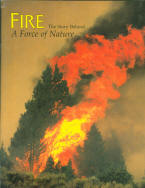 FIRE--a force of nature: the story behind the scenery. by de Golia.
FIRE--a force of nature: the story behind the scenery. by de Golia.
How fires start, role of fire in nature, blazes,
suppression efforts. 48 large-format pages, color illustrations.
ISBN: 0-88714-038-6. 1989. First printing. Order #: KCPU4429 paper$11.95.
 RC FIRE IN SIERRA NEVADA FORESTS: a photographic interpretation of ecological change since 1849. by George Gruell.
RC FIRE IN SIERRA NEVADA FORESTS: a photographic interpretation of ecological change since 1849. by George Gruell.
The face of the Sierra has filled in-and that, Gruell says, is not a good
thing; not for wildlife, not for the forest and not for the future of the
range's ecosystems." - Bettina Boxall, Los Angeles Times.
Fire in Sierra Nevada Forests examines the woodlands through repeat
photography: re-photographing sites depicted in historical photographs to compare
past vegetation to present.
256 pages, 7.25 x 10.25. Published by Mountain Press.
ISBN: 0-87842-446-6. Order #: MOPR9062 paper$95.00. RC
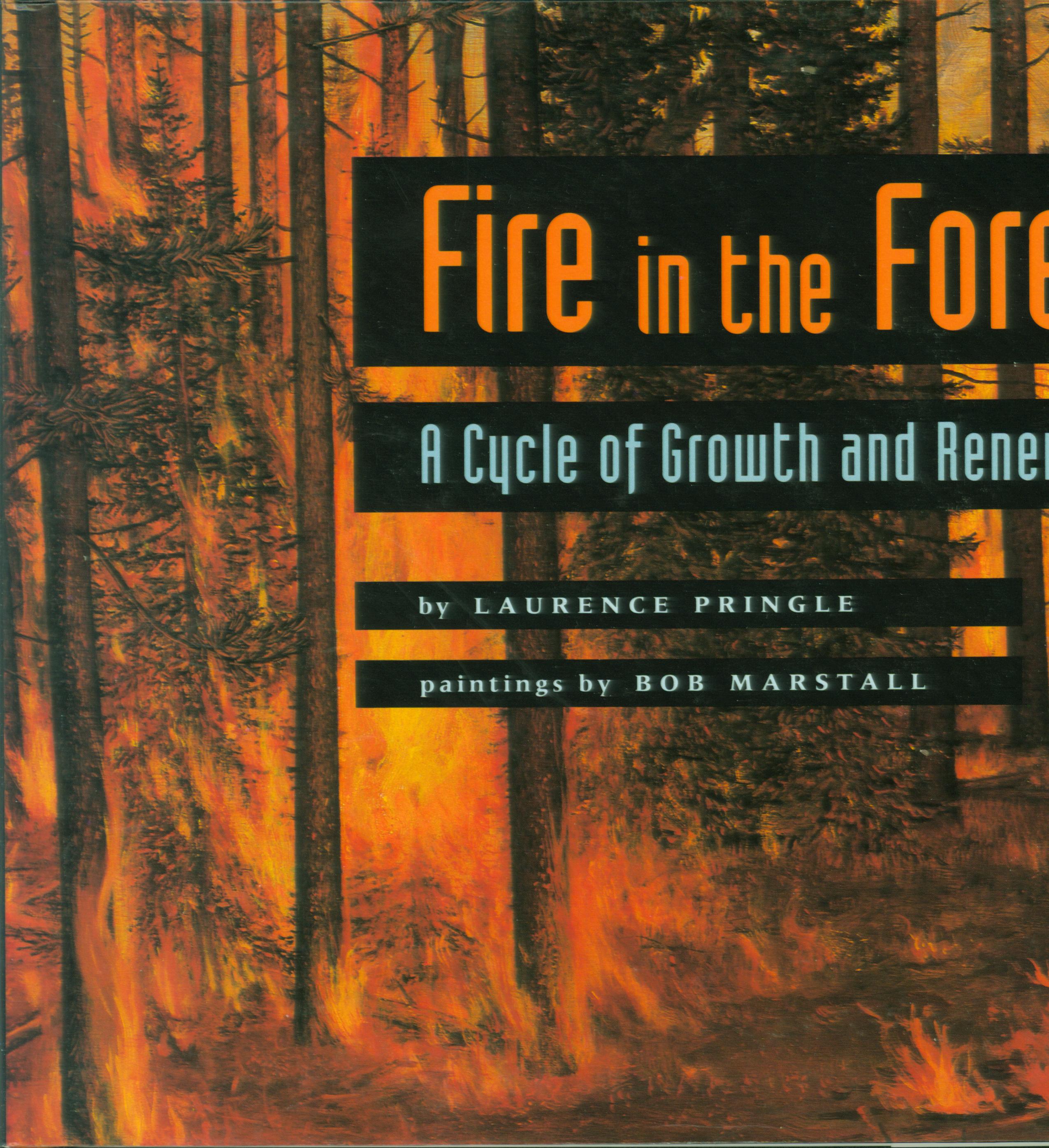 FIRE IN THE FOREST: a cycle of growth and renewal. by Laurence Pringle.
FIRE IN THE FOREST: a cycle of growth and renewal. by Laurence Pringle.
Children's book explains fire as
a natural process in some ecosystems: it recycles organic matter, provides new food sources for wildlife, clears the way for a new generation of trees and plants. Explains how some species require fire to regenerate, holding back reproduction until fire has provided more suitable habitat. Color paintings, 31 pages.
ISBN: 0-689-80394-X. 1995. Order #:SISC6113 cloth$16.00.
 FRACTALS: THE PATTERNS OF CHAOS--discovering a new aesthetic of art, science, and nature. by John Briggs.
FRACTALS: THE PATTERNS OF CHAOS--discovering a new aesthetic of art, science, and nature. by John Briggs.
Explores the unique patterns left behind by unpredictable movements in nature, explaining the concept and principles of fractals. Have you wondered "What is a fractal?" It's defined as a geometric shape that is self-similar through infinite iterations in a recursive pattern and through infinite detail. Simple, right? Don't worry, author Briggs goes over all the pieces. Color photos, 192 large-format pages, index. See sample pages, illustrations.
ISBN: 0-67-74217-5. 1992. Order #: SISC4058 paper$20.00.
 GRASSLANDS: Audubon Society Nature Guide. by Lauren Brown.
GRASSLANDS: Audubon Society Nature Guide. by Lauren Brown.
Comprehensive field guide to birds, wildflowers, trees, grasses, insects, and other natural wonders of North America's
prairies, fields, and meadows. The varied grassland regions of the United States are outlined--tallgrass, desert, inter mountain, for instance--with their associated plants and animals. Also in the book individual species are described with their habitats and ranges and a line drawing of each. Color photos show the character of the different grasslands and their flora and fauna. 606 pages, index..
ISBN: 0-394-73121-2. 1985. Order #: RAHO2724 paper$19.95.
 A GUIDE TO CALIFORNIA FRESHWATER FISHES. by
Bob Madgic.
A GUIDE TO CALIFORNIA FRESHWATER FISHES. by
Bob Madgic.
Enhanced by William Crary's 66 species paintings, will assist in identifying and learning about the
fish species that inhabit California's waters. Fish are logically grouped into
coldwater game fish, warmwater game fish and non-game fish. Each fish gets a
detailed and interesting description, along with a first-rate illustration Also habitat photos, maps and
diagrams.160 pages.
ISBN: 978-0-87961-254-2. Order #: NAGR2082 paper$19.95.
 GUIDE TO THE SOUTH KAIBAB TRAIL. by Rose Houk.
GUIDE TO THE SOUTH KAIBAB TRAIL. by Rose Houk.
Explores the natural history of this trail from the South Rim of the Grand Canyon to the Colorado River, developing an understanding and therefore an appreciation of the features to be seen. Sections describe The Rocks, The Desert, and The River with notes about the special character of each including geology, wildlife, flowers, history , interactions, enjoyment of the scene. And so this is not a trail guide in the usual sense but an interpretation of what can be seen. Fold-out drawings, map, 24 pages.
ISBN: 0-938216-15-5. 1981. Order #: GRCA0569 paper$3.95.
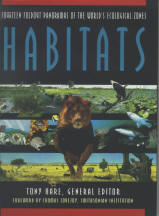 HABITATS: fourteen foldout panoramas of the world's ecological zones. edited by Tony Hare.
HABITATS: fourteen foldout panoramas of the world's ecological zones. edited by Tony Hare.
Explores each of the 14 major ecosystems of the world: rain
forest, savanna, desert, scrubland, mountain, grassland, forest, taiga, tundra, river and
lake, swamps and bogs, oceans, coasts, reefs. Combines technical innovation with dazzling graphics to celebrate the diversity and interdependency of Earth's species. Depicts animal and plant species native to each region and traces their relationships within them. Identifies the elements that distinguish each habitat, a tribute to the adaptability of nature. Color photos and drawings, glossary, 143 large-format
pages, index. See sample pages.
ISBN: 0-02-548155-X. 1994. Order #: MACM8534 cloth w/dust jacket$25.00.
 HANDBOOK OF
PLASTIC EMBEDDING of animals, plants and various objects with improved C.M.E. D6 polyester
resins. by Earnest L. Lutz, Sr.
HANDBOOK OF
PLASTIC EMBEDDING of animals, plants and various objects with improved C.M.E. D6 polyester
resins. by Earnest L. Lutz, Sr.
Explains plastics, sources, methods of embedding are clearly detailed for preserving specimens in natural color inside plastic as clear as glass and as durable as stone. 186 pages, color and black-ans-white photographs.
Inventory = 1; out of print. ISBN: 911010-44-0. Covers scuffed. Order #:NAGR3085 paper$9.95
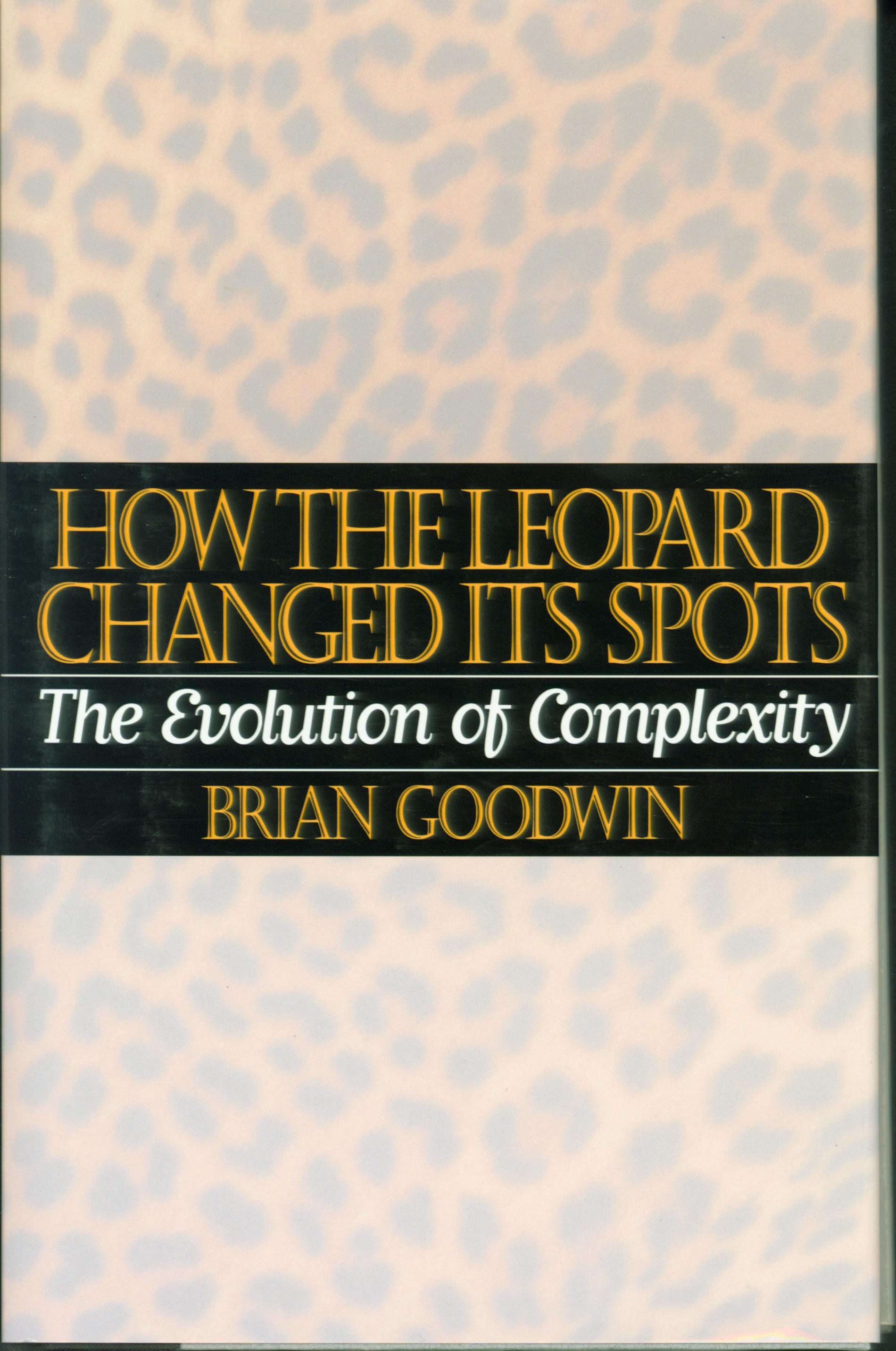 HOW THE LEOPARD CHANGED ITS SPOTS: the evolution of complexity--cloth. by Brian Goodwin.
HOW THE LEOPARD CHANGED ITS SPOTS: the evolution of complexity--cloth. by Brian Goodwin.
Explores concepts of science including the Darwinian theory of evolution that determines the character of the individuals within a species group and argues that organisms not only compete but also cooperate and are as altruistic as they are selfish and are as playful as they are destructive and repetitive. This leads to a new or at least another way of applying our own philosophies to situations rather than imagining conflict as the sole basis for determining the various life forms and as the most important ingredient for dealing with our own circumstances. Diagrams, 252 pages, index. See SISC1564 for paper edition.
ISBN: 0-02-544710-6. 1994. Order #: SCRI8756 cloth$23.00.
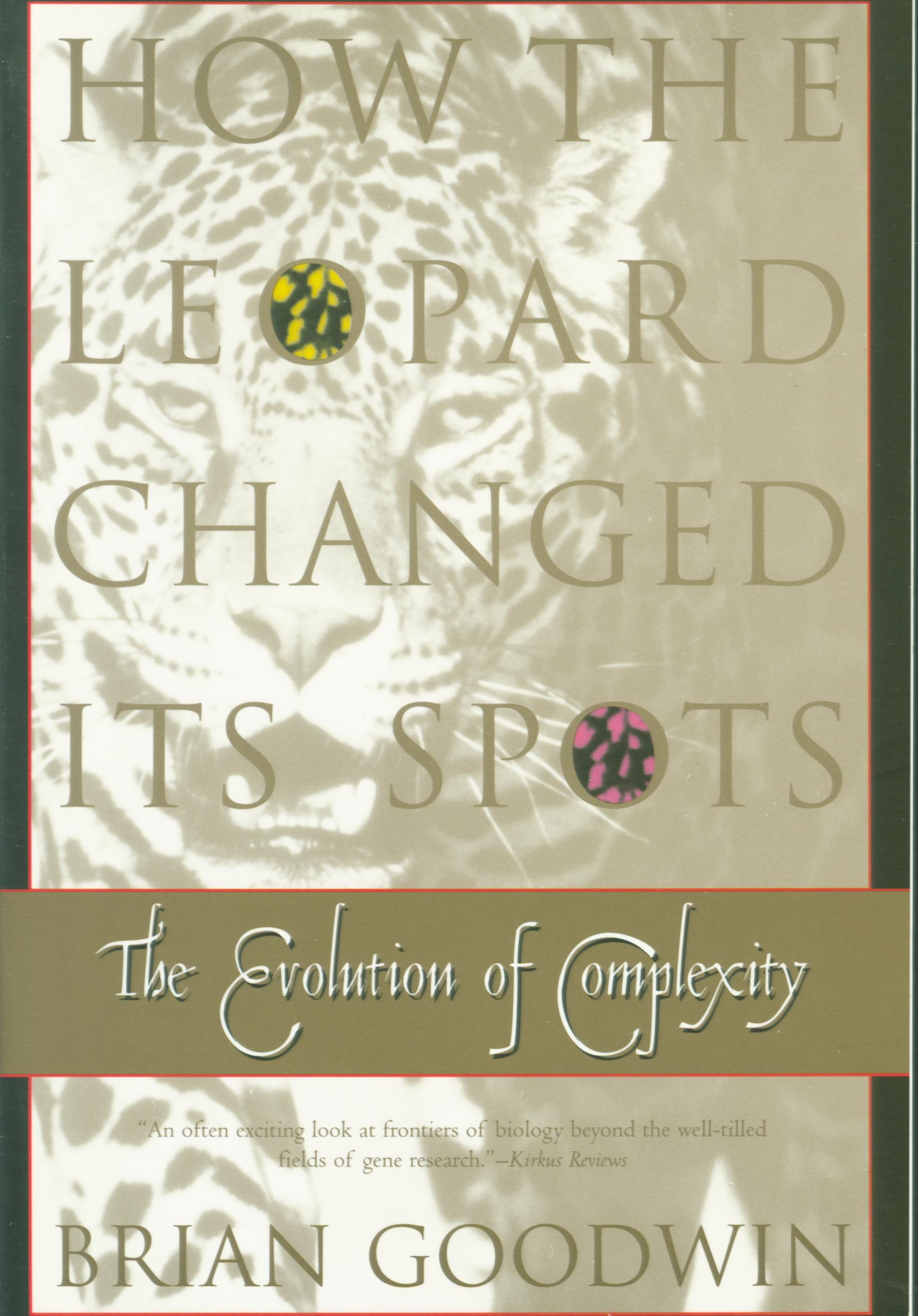 HOW THE LEOPARD CHANGED ITS SPOTS: the evolution of complexity--paper. by Brian Goodwin.
HOW THE LEOPARD CHANGED ITS SPOTS: the evolution of complexity--paper. by Brian Goodwin.
Explores concepts of science including the Darwinian theory of evolution that determines the character of the individuals within a species group and argues that organisms not only compete but also cooperate and are as altruistic as they are selfish and are as playful as they are destructive and repetitive. This leads to a new or at least another way of applying our own philosophies to situations rather than imagining conflict as the sole basis for determining the various life forms and as the most important ingredient for dealing with our own circumstances. Diagrams, 252 pages, index. See SCRI756 for cloth edition.
ISBN: 0-684-80451-4. 1996. Order #: SISC1564 paper$14.00.
 HOW TO PAINT LANDSCAPES. by Alwyn Crawshaw.
HOW TO PAINT LANDSCAPES. by Alwyn Crawshaw.
Learn basic ways to paint landscapes in four art media, (acrylics, oils, watercolors, pastels) with techniques for beginners and accomplished artists. Covers equipment; drawing and sketching; tips about each medium; how to paint sky, trees, water, ground, snow; color theory; how to use photographs; step-by-step exercises. Guides you through nine exercises. Color illustrations, 64 large-format pages.
ISBN: 0-89586-267-0. 1981. Order #: HPBO6914 paper$6.95.
 HOW TO PRESERVE ANIMAL & OTHER SPECIMENS IN CLEAR PLASTIC. by Cleo E. Harden.
Instructions
on simple methods for preserving biological and mineral specimens in clear plastic. Easy methods to immortalize creatures in beauty and perfection for hobbyists, school teachers, and zoologists. Illustrated, 64 pages, references, index..
HOW TO PRESERVE ANIMAL & OTHER SPECIMENS IN CLEAR PLASTIC. by Cleo E. Harden.
Instructions
on simple methods for preserving biological and mineral specimens in clear plastic. Easy methods to immortalize creatures in beauty and perfection for hobbyists, school teachers, and zoologists. Illustrated, 64 pages, references, index..
Inventory = 1; otherwise out of print.ISBN: 0-9611010-46-7. Order #: NAGR5002 paper$6.95.
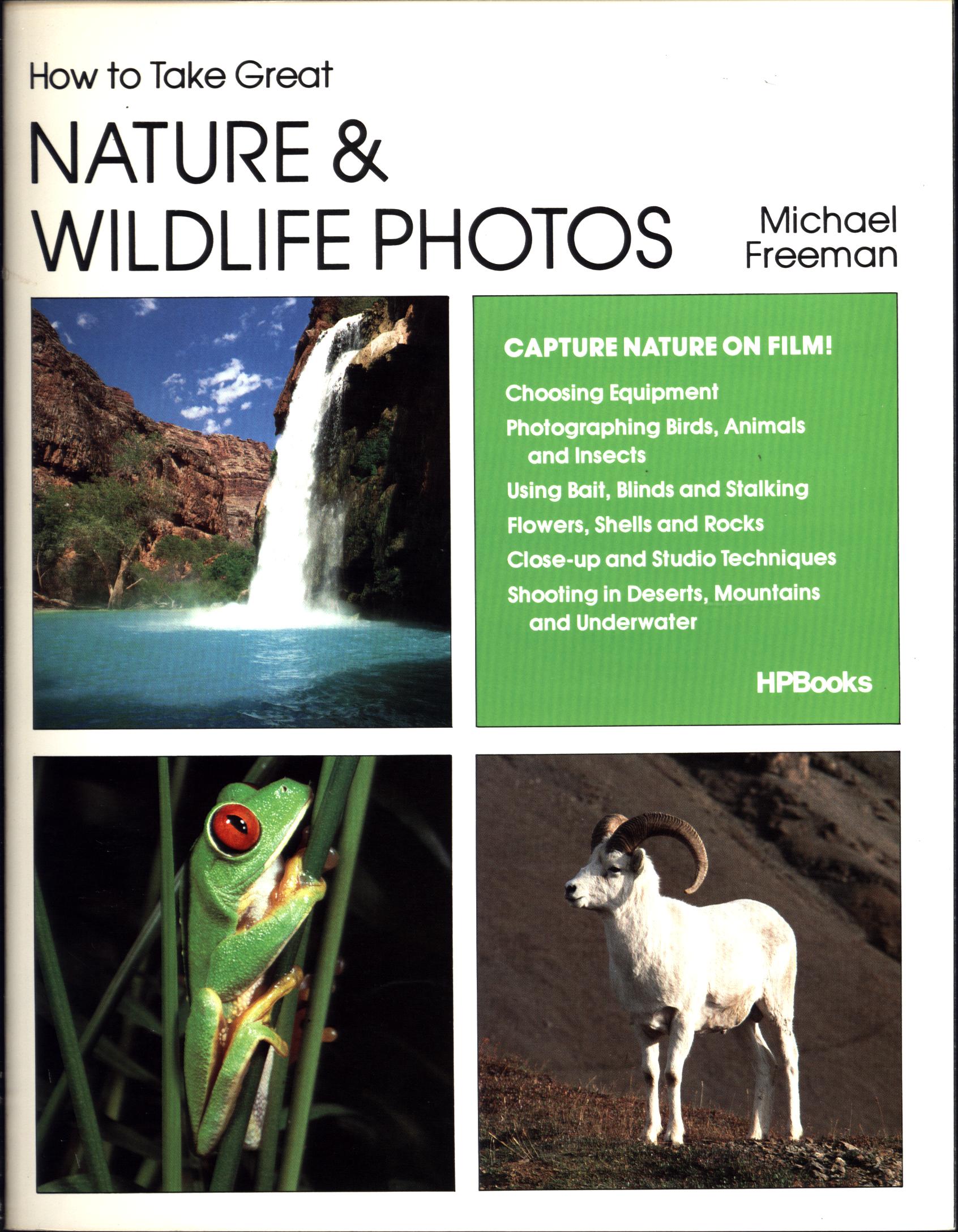 HOW TO TAKE GREAT NATURE & WILDLIFE PHOTOS. by Michael Freeman.
HOW TO TAKE GREAT NATURE & WILDLIFE PHOTOS. by Michael Freeman.
Shows how to photograph birds, wild animals, close-ups of flowers, or landscapes. Gives ways to carry, adapt, and support equipment in the field. How to stalk, wait and hide from wildlife to record animals in their natural surroundings. How to use remote-control photography methods and how to improve zoo photography. Get more grandeur in landscape photos, understand panoramas, weather, the environment; and shoot in mountains, deserts, in and around water, from a plane, or in snow. Also how make great close-ups of plants and flowers, insects, shells, and other small natural objects. Photograph nature in the studio making sets that look natural. Also lighting methods. Drawings, black-and-white and color photographs, 224 large-format pages, index.
ISBN:0-89586-294-8. 1981. Order #: HPBO1819593 paper$19.95.
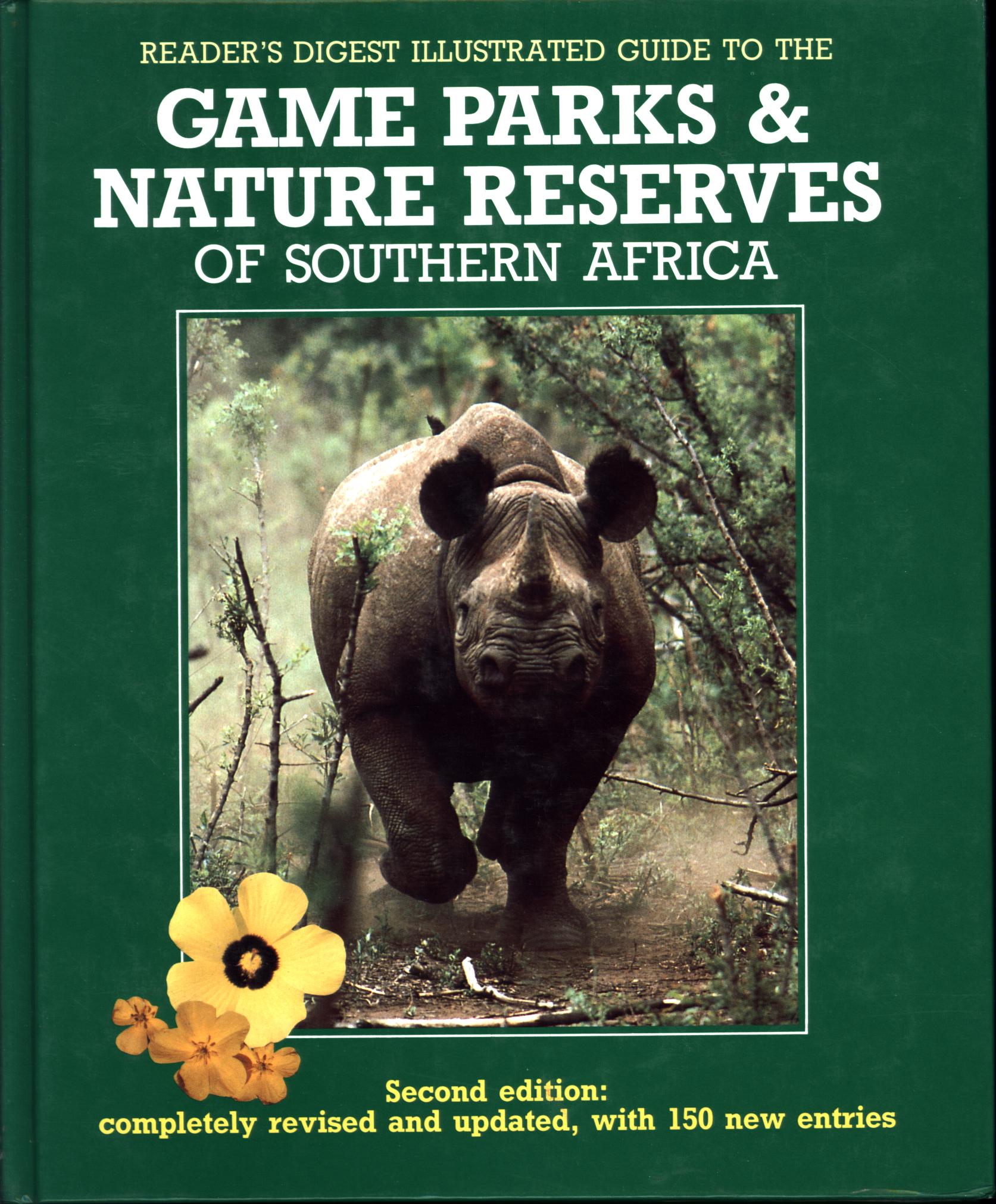 ILLUSTRATED GUIDE TO THE GAME PARKS & NATURE PRESERVES OF SOUTHERN AFRICA. edited by Alan Duggan, The Reader's Digest Association.
ILLUSTRATED GUIDE TO THE GAME PARKS & NATURE PRESERVES OF SOUTHERN AFRICA. edited by Alan Duggan, The Reader's Digest Association.
Nowhere else on Earth is there such an abundance of fauna and flora as South Africa and with so many places to see and enjoy it. Describes 9 regions and areas within them for seeing wildlife, also listing individual national parks. Special features include Hiking and Backpacking, Bird-watching for the Novice, Beneath the Waves, Star Gazing, Through the Lens, On Safari, and more. Appendixes with color drawings identify the species of flora, insects and other invertebrates, aquatic life, reptiles, birds, and mammals. Color photographs, drawings, and maps, 440 large-format pages, index.
ISBN: 0-947-0086-7. 1991. Order #; RAHO7063 cloth$30.00.
 THE INFLUENCE OF MODERN MAN ON THE VEGETATION OF YOSEMITE VALLEY. by Robert P. Gibbens & Harold F. Heady.
THE INFLUENCE OF MODERN MAN ON THE VEGETATION OF YOSEMITE VALLEY. by Robert P. Gibbens & Harold F. Heady.
How use of fire, suspension of fire, grazing of livestock,
river control, meadow drainage altered the forests and meadows in part of
Yosemite National Park. Documents character of Yosemite Valley at time of discovery by non-Natives, how and why tree cover has increased, influences of wildlife on plants, of floods and rockslides, and of visitors, plus cutting clearing, and planting on the forest. Many comparison photos of earlier scenes and those of today. California Agricultural Experiment Station Extension service Manual 36. Photos, 46 pages, large format.
ISBN: None. 1975. Order #: YOCO3993 paper$25.00.
 IN THE BLINK OF AN EYE: how vision sparked the big bang of evolution. by Andrew Parker.
IN THE BLINK OF AN EYE: how vision sparked the big bang of evolution. by Andrew Parker.
Reveals a theory of the great increase in animal diversity about 550 million years ago during the "Cambrian Explosion" when animal classification forms went from 3 to 38, the number we still have today. That time period is when primitive animals developed vision. Author Parker draws on evidence not just from biology, but also from geology, physics, chemistry, history, and art in this account of his intellectual journey. Photographs, drawings, 334 pages, index.
ISBN: 0-465-5438-2. 2003. Order #: PERS2713 paper$15.00.
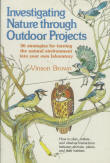 INVESTIGATING NATURE THROUGH OUTDOOR PROJECTS. Brown.
INVESTIGATING NATURE THROUGH OUTDOOR PROJECTS. Brown.
36 strategies for turning the natural
environment into your own laboratory. Illustrated, 224 pages.
ISBN: 0-8117-2213-9. Order #: STAC1390 paper$14.95.
 LIFE AT HIGH TEMPERATURES. by Thomas D. Brock.
LIFE AT HIGH TEMPERATURES. by Thomas D. Brock.
Story of microorganisms that live in the boiling waters and runoff channels of the geysers and hot springs. Although their vast numbers make their color visible to the naked eye, an individual microbial cell is so small it is invisible. Most of the microorganisms are bacteria but where temperatures are lower, algae and protozoa are also present. Discovered in the 1960s, they have had major uses in the biotechnology industry with the potential for billions of dollars of activity..
Called thermophiles, the types present vary with the temperature, acidity, and mineral content of the hot water. Explains origins of waters and of thermal features and characteristics of many of those in Yellowstone. Also tells how more familiar plants and animals relate to waters that are up to 113 degrees Fahrenheit. Color photographs, 32 pages.
ISB:0-9349480-7-0. 1994. Order #: YELL2731 paper$3.95.
 THE MAINE COAST: a nature lover's guide. by Dorcas S. Miller.
THE MAINE COAST: a nature lover's guide. by Dorcas S. Miller.
Excursions along Maine's coastal Route 1 highway from Kittery to Eastport in a concise handbook on the climate, biology,
and geology and how environmental and cultural forces have shaped the natural history. Chapters tell of the bedrock and glacial history of the region, the wildlife and ecosystems of forest, beach, rocky shore, salt marsh, and freshwater wetlands and what wildlife uses them. Drawings, maps 189 pages, index..
ISBN: 0-914788-12-4. 1979. Covers scuffed. Order #: GLPE2290 paper$7.95.
#NATURAL AREAS AND YOSEMITE: prospects for the future.
1990 Yosemite Centennial Symposium: natural area management, biodiversity, cultural history. 667 pages.
ISBN: . Order #: YOCO5238 paper$35.00.
 NATURAL HISTORY OF THE PINNACLES NATIONAL MONUMENT (now national park). by Ralph C. Webb.
NATURAL HISTORY OF THE PINNACLES NATIONAL MONUMENT (now national park). by Ralph C. Webb.
Geology, plants, animals of park in California's central coast range. Chapters include geology ad paleobotany, and biotic communities of xeric, riparian, chaparral, and foothill woodland. Includes "The importance of ecology" and an essay on the canyon trail in the park. Drawings, bibliography, glossary, photos, 72 pages.
ISBN: None. 1969. Order #: SOPM1322 paper$4.95.
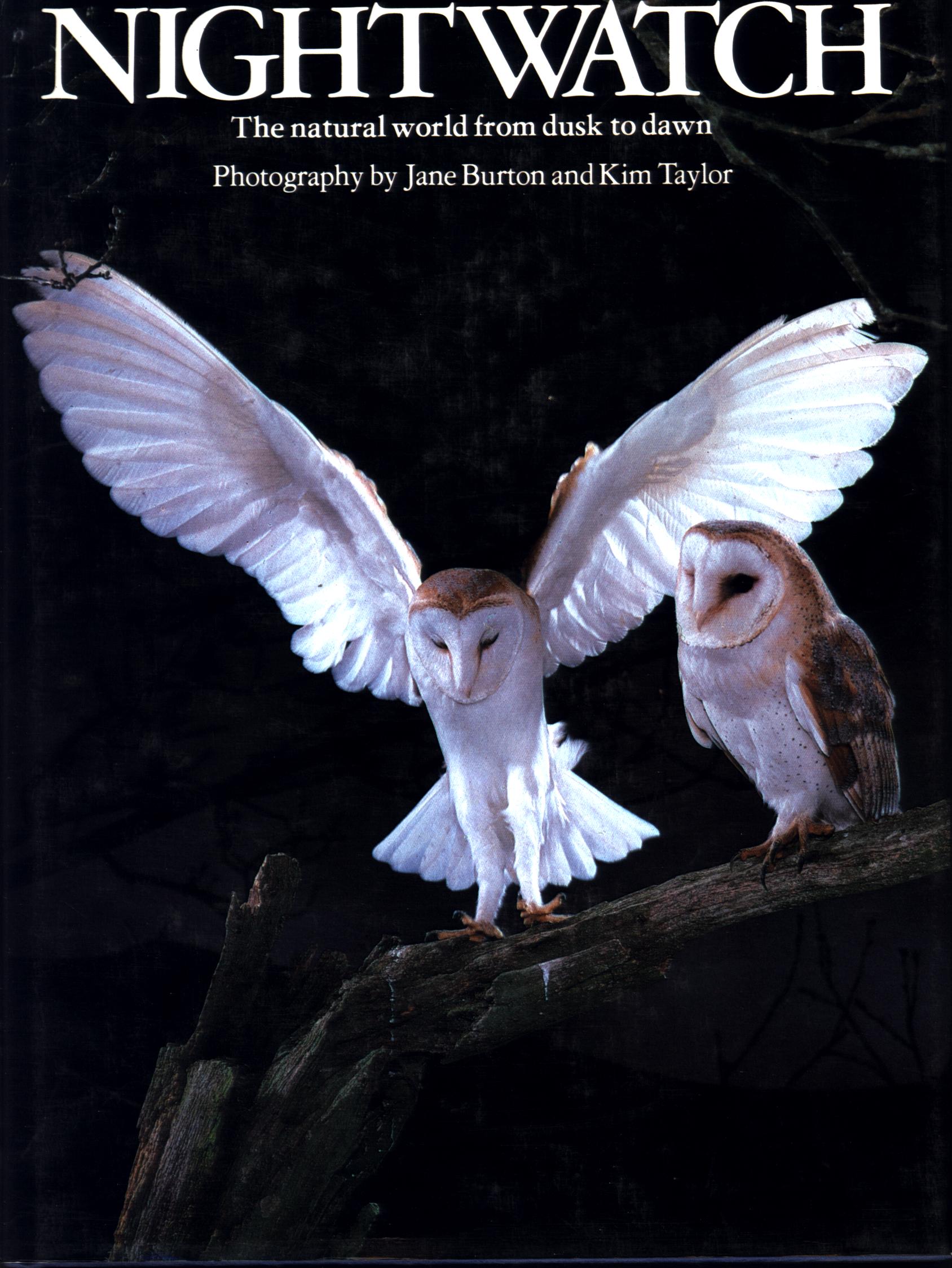 NIGHTWATCH: the natural world from dusk to dawn. by John Cloudsley-Thompson, Minnie Courtney, Pat Doncaster, Henry Arnold, Tony Wallwork, Michael Allaby, Linda Gamlin.
NIGHTWATCH: the natural world from dusk to dawn. by John Cloudsley-Thompson, Minnie Courtney, Pat Doncaster, Henry Arnold, Tony Wallwork, Michael Allaby, Linda Gamlin.
Photographic guidebook to nocturnal life for nature enthusiasts and general readers. Only with the development of modern technology--radar echo-sounding, infrared cameras, for example, have we been able to expand our knowledge of the night-time world of animals. Includes a section on practical advice to discover your own mysteries of the night. Sections include "The sleep of plants", "Nocturnal life on the mountains", "Seeing in the dark", "Night migration", "The amateur night naturalist", "Night photography", and more. 240 color photos, 192
large-format pages, index. See sample pages,illustations.
ISBN: 0-87196-271-3. 1983. Order #: FAOF5346 cloth$24.95.
 NORTHWOODS WILDLIFE REGION. by
Jay M. & Constance Conrader.
NORTHWOODS WILDLIFE REGION. by
Jay M. & Constance Conrader.
An all-in-one guide to major mammals, birds, reptiles and amphibians plus over 250 plants across the northern Great Lakes states from Minnesota/WI to
MA/ME in US and adjacent Canada. Identification tips are given and habitats where each species is most likely to be found. Hear a loon, glimpse a red fox, find an orchid. Color drawings and photographs, l92 pages, glossary and index.
Check stock.ISBN: 0-87961-127-8. Order #: NAGR1977 paper$12.95.
 THE OBJECT STARES BACK: on the nature of seeing. by James Elkins.
THE OBJECT STARES BACK: on the nature of seeing. by James Elkins.
Explores how we see--by patterns of circling around points on an object, finding a spot to focus on, or by glimpsing. Provides text and exercises to help understand the ways you. authors point is that "Seeing alters the thing that is seen and transforms the seer." One might wonder if better understanding this point is that we would better know the character of objects seen rather than how our visual process records them. Illustrated, 270 pages.
ISBN: 0-684-80095-0. 1996. Order #: SISC1563 cloth$24.00.
 THE ORVIS GUIDE TO OUTDOOR PHOTOGRAPHY.
by C. Boyd Pfeiffer.
THE ORVIS GUIDE TO OUTDOOR PHOTOGRAPHY.
by C. Boyd Pfeiffer.
Gives professional advice on best equipment for a variety of outdoor pursuits: hiking fishing hunting, nature study, and more. Chapters on Lighting and Composition, Flash Photography, and Close-up Photography offer technical instruction. There is also full treatment of animal, bird, and wildlife photography. Includes composition, equipment adaptations for special shots in difficult situations. Makes outdoor experiences more rewarding by bringing back memorable /images from trips afield. Over 100 photographs including 4 pages in color, 226 pages, index.
Inventory =1. ISBN: 0-8329-0434-1. 1986. Order #: MISC2097 paper$13.95.
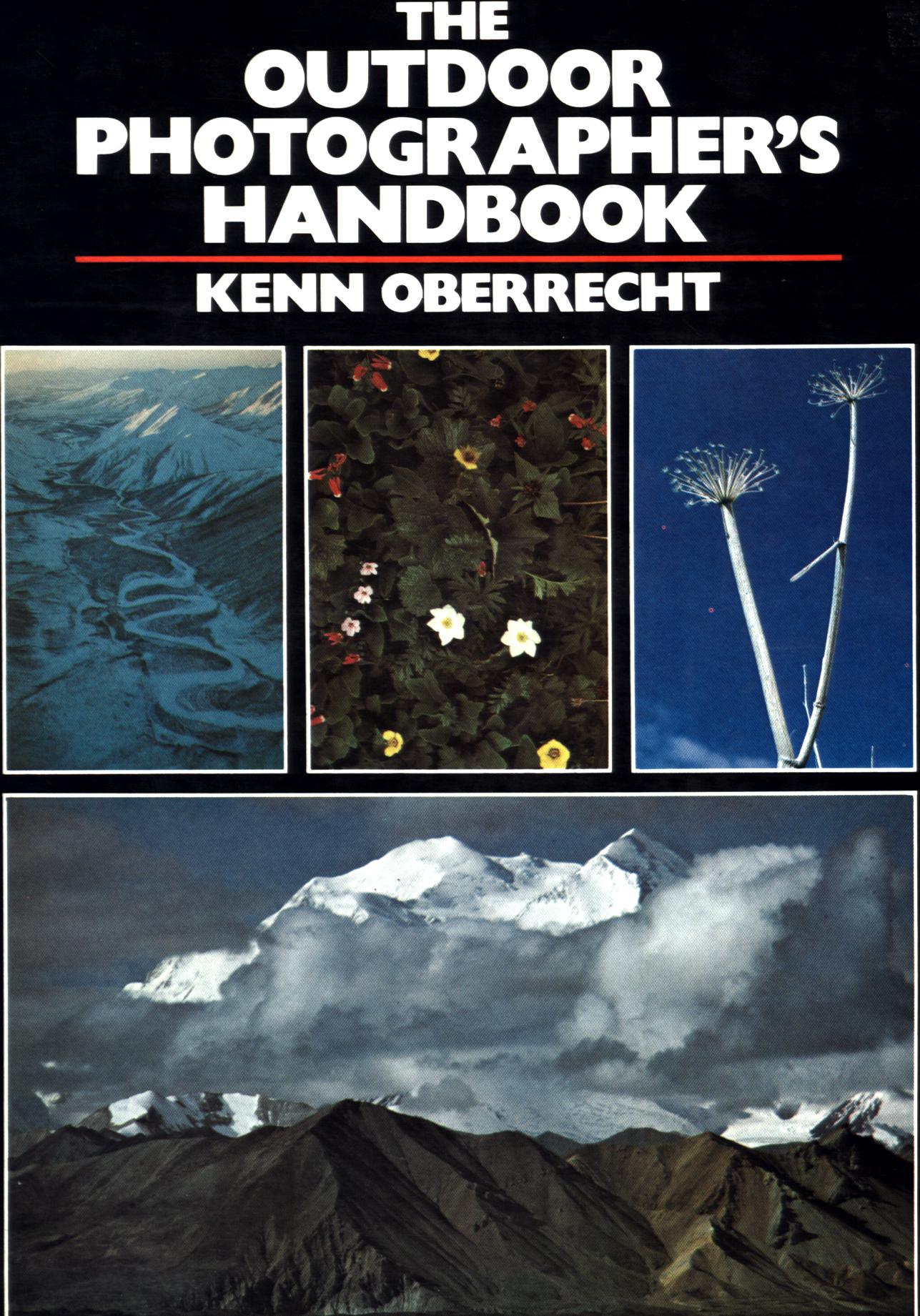 THE OUTDOOR PHOTOGRAPHER'S HANDBOOK. by Kenn Oberrecht.
THE OUTDOOR PHOTOGRAPHER'S HANDBOOK. by Kenn Oberrecht.
Shows how to gear up for, compose, and take outdoor photographs of the highest order. Covers basics as what camera to use and even how to hold it, how to select the right camera for the job at hand. Discusses light and lighting, how to compose a photograph to best get the effect wanted, the thorny issue of filters, how to photograph land- and warter-scapes, close-up photography and photographing in populated areas. Also how to travel with cameras. Tells how to shop for camera equipment and how to care for it. Glossary, bibliography, 275 large-format pages, index.
Inventory =1. ISBN: 0-87691-289-7. 1979. Order #: MISC2053 cloth$19.95.
 PARK RANGER GUIDE TO RIVERS & LAKES. by Arthur P. Miller, Jr. & Marjorie L. Miller.
PARK RANGER GUIDE TO RIVERS & LAKES. by Arthur P. Miller, Jr. & Marjorie L. Miller.
What to see and learn on America's freshwaters. Interviews of over 100 rangers biologists, guides, and naturalists present these experts' advice on observing aquatic animals, birds, and plants in their natural habitats. Overview explains how and where to get assistance in observing these aquatic environments and explains the hydrologic cycle and how river change in time with erosion and flooding and how that affects vegetation and vice versa, plus the life cycle of lakes. Contents are arranged regionally: Appalachians and eastern woodlands, southern mountains and lowlands, prairies and plans, desert southwest, mountain west. Appendixes tell how to rate a rapid and lists rivers and lakes preserved for public use. Photographs, drawings, 200 pages, index.
ISBN: 0-8117-3038-7. 1991. Order #: STAC1739 paper$10.95.
 A PERFECT HARMONY: the intertwining lives of animals and humans throughout history. by Roger A. Caras.
A PERFECT HARMONY: the intertwining lives of animals and humans throughout history. by Roger A. Caras.
Observes that we are all the products of cultures, histories, and events that were made possible by domestication of animals. What would we do without them? is asked and the answer is as personal as the pets we keep, the food we eat, and the clothes we wear, a panorama as the history of mankind. We would still be hunting for meat, for example. Ideas about how man has successfully domesticated some animals, like the horse but failed with others, as with the zebra. And some domesticated animals have been used to manager others: horse/cattle; dog/sheep; cormorant/fish are examples. Drawings,
271 pages, index.
ISBN: 0-684-81100-6. 1996. Order #: SISC8809 cloth$23.00.
#POND LIFE: Golden Guide. by Reid.
Plants and animals that live in lakes, streams, wetlands;
observing and collecting. Color illustrations, 160 pages, 4"x 6".
ISBN: 0-307-24017-7. Order #: WEST3330 paper$5.95.
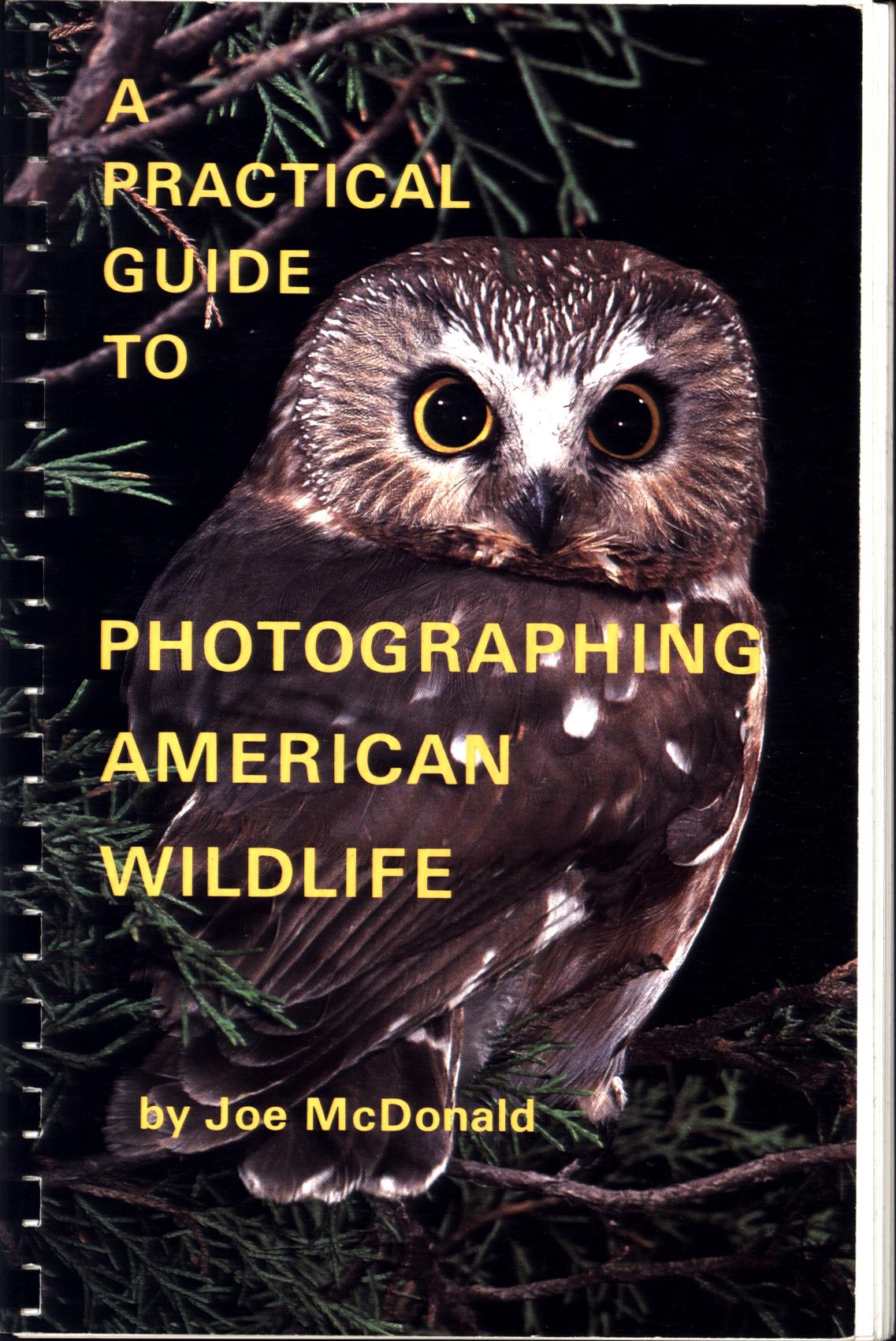 A PRACTICAL GUIDE TO PHOTOGRAPHING AMERICAN WILDLIFE. by Joe McDonald.
A PRACTICAL GUIDE TO PHOTOGRAPHING AMERICAN WILDLIFE. by Joe McDonald.
Presents basic photography and
equipment, special devices and applications, and tips on photographing insects, reptiles
and amphibians, birds, and mammals. Tripods and window mounts, calling in wildlife, home studios, shooting into an aquarium, high-speed flash, bait, decoys, lens, tubes, and more. Photographs, 205 pages, index. See sample pages, illustrations.
ISBN: 09613246-1-9. 1983. Order #: MISC5156 spiral$9.95. Note that page 99 was not printed.
 PREHISTORIC LIFE: the rise of the vertebrates. by David Norman.
PREHISTORIC LIFE: the rise of the vertebrates. by David Norman.
Traces emergence of life from earliest complex organisms to rise of
mammals (including humans), scientific theories on origins of life, environmental changes that influenced
evolution. Discusses the preservation, discovery, and interpretation of fossils and relates them to time periods on Earth as well as to the shifting positions of the continents. Tells of the development of special organs such as ears and lungs and presents those species that have more of the characteristics of modern humans as well as some of the cultural traits of our species. Includes section on further reading. Color photos and drawings, 246 large-format pages, index. See sample pages, illustrations.
ISBN: 0-671-79940-1. 1994. Order #: MACM8538 cloth w/dust jacket$30.00.
 A PRIMER FOR
ENVIRONMENTAL TRIPS using Western Outdoor Environmental Guides. Vessel.
A PRIMER FOR
ENVIRONMENTAL TRIPS using Western Outdoor Environmental Guides. Vessel.
Suggests exercises for students using the Western Outdoor Environmental Guides before,
during, and after trips afield, including Things to Do and Think About, plus references
and names of common plants and animals. Illustrated, 41 pages.
Inventory = 19. ISBN: None. 1976. Order #: KEEC0315 paper$3.95.
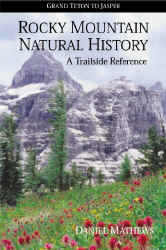 ROCKY MOUNTAIN NATURAL HISTORY: Grand Teton to Jasper--a Trailside Reference. by Daniel Mathews.
ROCKY MOUNTAIN NATURAL HISTORY: Grand Teton to Jasper--a Trailside Reference. by Daniel Mathews.
A field guide with a different approach: livelier to read, scientifically far-reaching. Covers a thousand plants, animals, fungi, microorganisms, rocks, and historic naturalist-explorers as well as the weather and geologic history of a magnificent region shared by five states, two provinces, and ten national parks.
Color photographs, drawings 656 pages, index, glossary, references.
Inventory = 4. ISBN: 0-9620782-2-0. 2003. Order #: MOPR1117 vinyl$26.00.
 SHARING NATURE WITH CHILDREN: a parents' and teachers' nature-awareness guidebook. by Joseph Bharat Cornell.
SHARING NATURE WITH CHILDREN: a parents' and teachers' nature-awareness guidebook. by Joseph Bharat Cornell.
Here are activities designed to develop intuitive qualities in children for observing the natural world and
understanding it. Not only are the activities carefully selected to do that, but they should be followed in a general sequence and with care in managing the learning process. The author gives guidance so parents and teachers--and the children--can have success in action games like hugging a tree, crawling outward from a pond and noticing the changes in soil and plants, how to survive if lost. Drawings and photographs, 143 pages.
ISBN: 0-916124-14-2. 1979. Order #: DAWN2222 paper$6.95.
 SPOTTER'S HANDBOOK: flowers, trees, & birds of North America. by Michael Ruggiero, Alan Mitchell, and Philip Burton.
SPOTTER'S HANDBOOK: flowers, trees, & birds of North America. by Michael Ruggiero, Alan Mitchell, and Philip Burton.
Presents over 425 species of birds, wildflowers, and trees of the United States and Canada. Notes tell where each may be found and its size and the features that identify it. Plant leaf patterns, seeds, and flowers are shown and places of occurrence are included. Life habits of birds are described, such as mating rituals, feeding, nesting. Provides hints on how to observe the plants and birds. Tables list species in western and eastern regions. Color drawings portray characteristics of each species. Glossary, 192 little pages for easy carrying in the field, index.
ISBN: 0-8317-7954-3. 1979. Order #: MISC2389 paper$5.95.
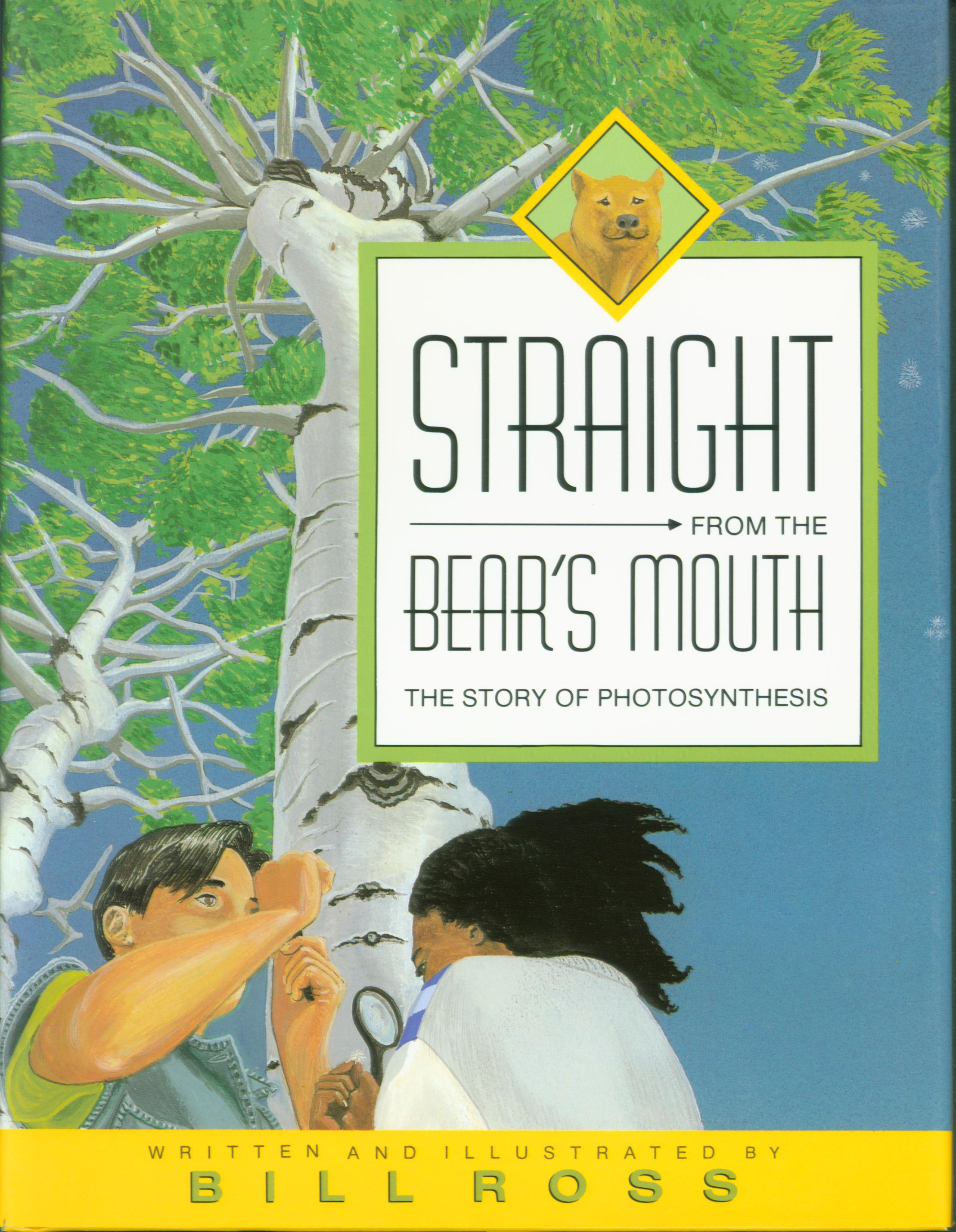 STRAIGHT FROM THE BEAR'S MOUTH: the story of photosynthesis. by Bill Ross.
STRAIGHT FROM THE BEAR'S MOUTH: the story of photosynthesis. by Bill Ross.
Finding out how trees grow tall and large from tiny seeds without using up the soil they start life in. An experiment is conducted to find out. For children. Color drawings,
32 pages, glossary.
ISBN: 0-689-31726-3. Order #: SISC6170 cloth$16.00.
 WATER: A GIFT OF NATURE--the story behind the scenery. Robinson, Nelson, Higgins, & Brody.
WATER: A GIFT OF NATURE--the story behind the scenery. Robinson, Nelson, Higgins, & Brody.
Explores water in its various roles--life-giving, scenery, different forms, fresh and salt water, erosion and deposition, economics, recreation. 48 large-format pages, color illustrations.
ISBN: 0-88714-077-7. 1993. First printing. Order #: KCPU4938 paper$8.95.
 WHILE YOU WAIT: a sportsman's guide to Nature. by Cliff Hauptman.
WHILE YOU WAIT: a sportsman's guide to Nature. by Cliff Hauptman.
Field guide follows the seasons with stories to read while waiting for the buck or birds to come in or the fish to strike. Highlights some of nature's fascinating side-shows, answering questions you may have always been curious about or directing your gaze anew. For instance, essays on caddis worms, frog calls, galls, leaf colors, whirligigs, and many more. Line drawings, 208 pages.
ISBN: 0-913276-46-4. 1984. Order #: JOHN7682 paper$9.95.
 WILDLIFE IN WOOD & DUCK CARVER'S HANDBOOK. by Richard LeMaster.
WILDLIFE IN WOOD & DUCK CARVER'S HANDBOOK. by Richard LeMaster.
How to carve lifelike waterfowl--purchasing and using tools,
making patterns, carving the curves, texturing feather details, painting, glazing, and protecting wood. Gives schematics for 25 varieties of puddle ducks and divers in step-by-step series. Includes basic duck anatomy, tips on training your eye to interpret photographs, understanding fine details of feathers, tips on attitude and motion, recreating the duck's changeable colors. Photos, patterns, 256 large-format pages, index.
ISBN: 0-8092-7336-5. 1978. Order #: CONT0351 cloth$37.50.
 WILDLIFE IN YOUR GARDEN. by Gene Logsdon.
WILDLIFE IN YOUR GARDEN. by Gene Logsdon.
Dealing with deer, rabbits, raccoons, moles, crows, sparrows, and other of nature's creatures in ways that keep them around but away from your fruits and vegetables. Build fences that work, with step-by-step guides, select wild plants most beneficial for animals and insects but also provide human food. Build birdhouses designed for particular species. Learn which wild creatures can be beneficial to your enjoyment of your garden. Enjoy the beauty of backyard wildlife, including a chapter on butterflies. Drawings, 268 pages, index.
ISBN: 0-87857-454-9. 1983. Order #: RODA2378 cloth $14.95.
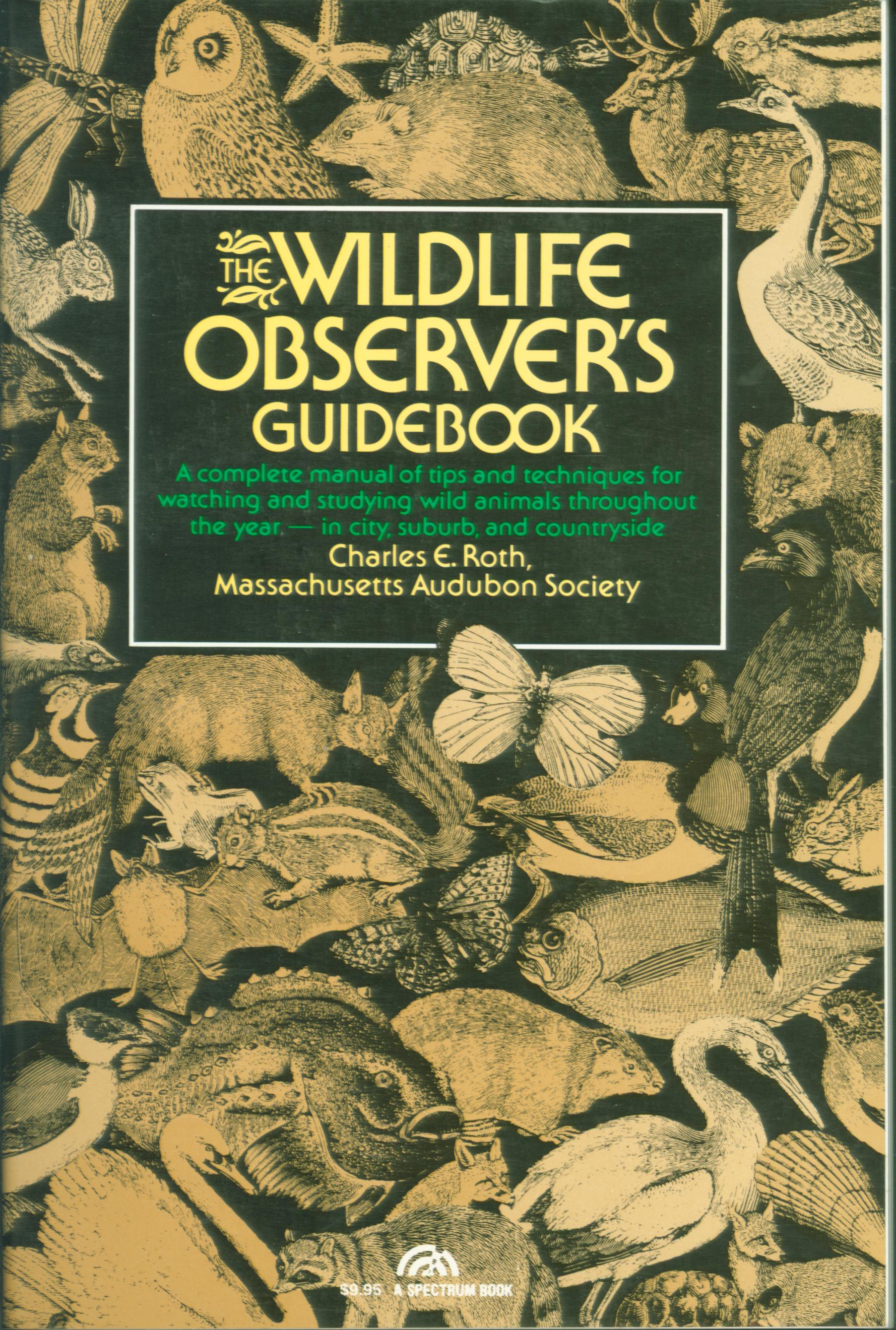 THE WILDLIFE OBSERVER'S GUIDEBOOK. by Charles E. Roth.
THE WILDLIFE OBSERVER'S GUIDEBOOK. by Charles E. Roth.
Complete manual of tips and techniques for watching and studying wild animals throughout the year--in city, suburb, and countryside. Provides insights into careful seeing, patterns of behavior to watch for, lures and live traps. Drawings, 239 pages, bibliography, index.
ISBN: 0-13-959528-7. 1982. Order #: PRHA7725 paper$9.95.
ISBN: 0-940352-00-3. 1989. Order #: MISC7725 cloth$25.00. Check stock and order #
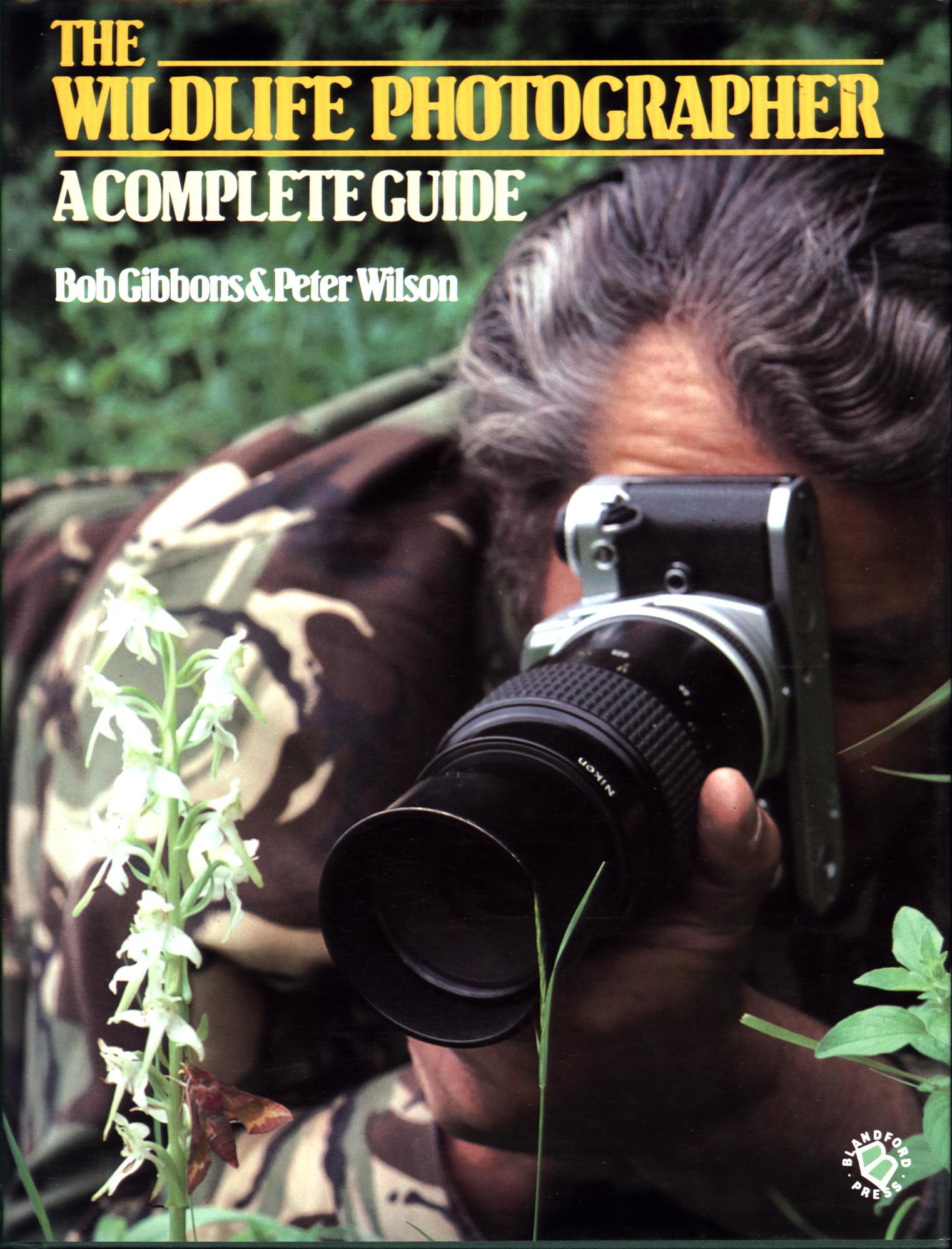 THE WILDLIFE PHOTOGRAPHER: a complete guide. by Bob Gibbons & Peter Wilson.
THE WILDLIFE PHOTOGRAPHER: a complete guide. by Bob Gibbons & Peter Wilson.
Informative sections on choosing and caring for equipment, on setting up hiding places and stalking the subjects, on special situations photographing different creatures and plants, and on close-up and macrophotography. Includes wildlife portrait scenes, close-ups, and action shots. There are sections on photographing plants, birds, insects and other invertebrates, mammals and reptiles, water and seashore life, habitat and landscape. Also explains how to give lectures and sell natural history photographs to picture agencies and for profit. Diagrams, black-and-white and color photographs, appendixes, 160 large-format pages, index,
ISBN: 0-7137-1524-3. 1987. Order #: MISC1756 cloth$19.95.
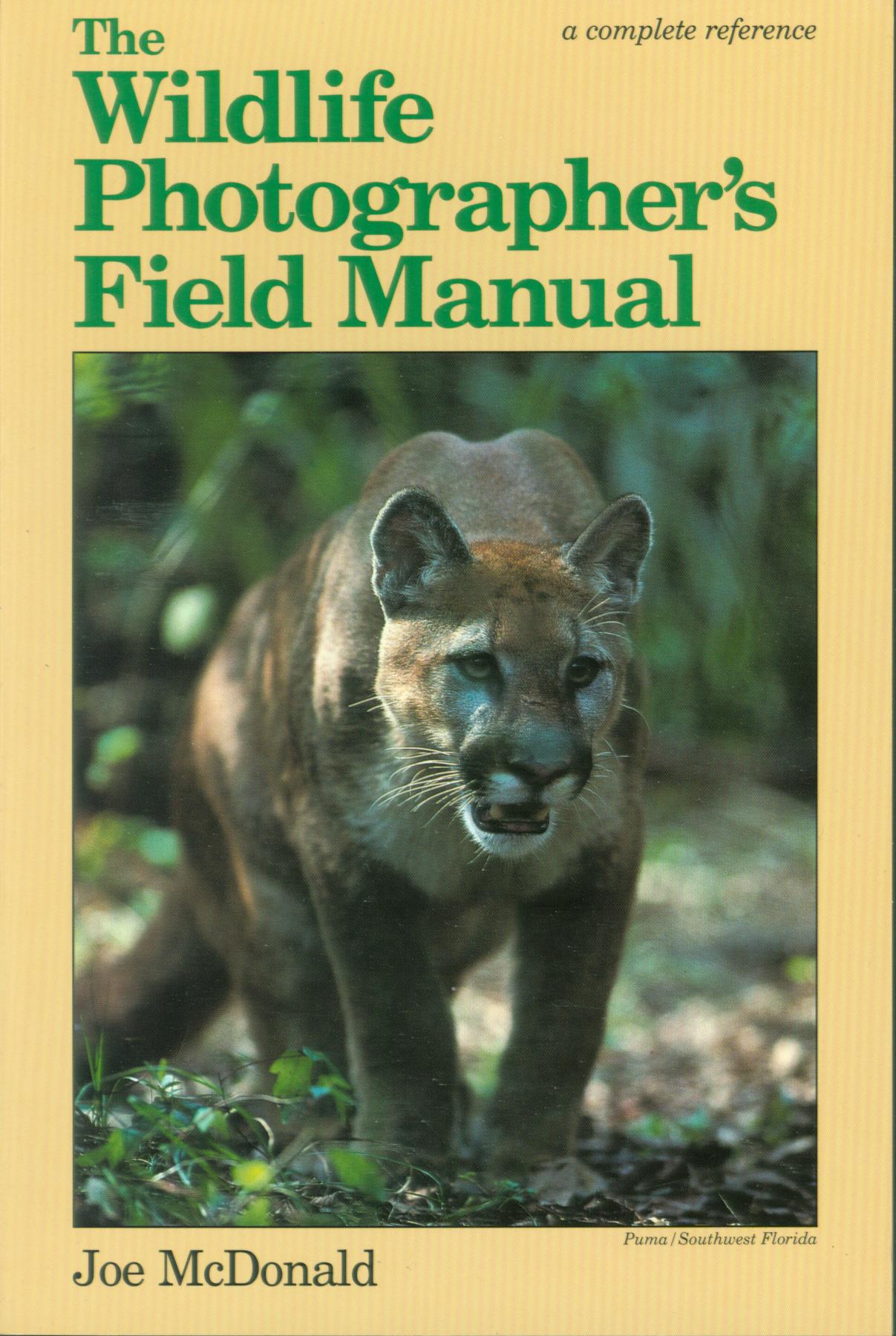
THE WILDLIFE PHOTOGRAPHER'S FIELD MANUAL. by Joe McDonald.
Tells of cameras to use, lenses, flashes, lighting, filters, light meter and field equipment. How to shoot in the field: photo blinds, game calling, close-up photography, exposure strategy and more. Includes special sections for photographing insets and arthropods, reptiles and amphibians, birds, mammals. Photographs, 190 pages, index.
ISBN:0-936262-07-9. 1992. Order #: MISC1198 paper$14.95.
 WINTER COMES TO YELLOWSTONE. by Stanley G. Canter.
WINTER COMES TO YELLOWSTONE. by Stanley G. Canter.
What is Yellowstone like in winter? What is a trip to Yellowstone like in winter? Text answers these questions with explanations of the effects of the cold and snowy months on the plants and wildlife--survival strategies, migrations, and hibernations and with some insects thriving in thermal waters and some bird species staying near these heated areas. Tells how to find and see wildlife in winter situations, with some being easier to spot then than in summer. Provides guides to the park roads, reporting winter conditions and also the unusual sites to see such as ice cones at the bases of waterfalls. Includes precautions for a safe trip. Map, drawings, 20 pages.
ISBN: None. Order #: YELL1324 paper$3.95.
VISTABOOKS HISTORY REPRINTS--
Nature
(in stock: for quantity orders, go to vistabooks.com):
also available on ebay and ebid
 THE BUFFALO. by Colonel Henry Inman with "Buffalo Bill" Cody.
THE BUFFALO. by Colonel Henry Inman with "Buffalo Bill" Cody.
America nearly lost its buffalo (or bison, to be more accurate), but in an early
conservation effort a small herd was retained. This has now grown into a sizable
population, which recall to us the vast herds that once roamed and even blackened the
plains. This story, however, is told by one #who at one point in his career was actively
engaged in slaughtering the animals. They were a nuisance that got in the way of the new
trains, and, besides, eliminating buffaloes might help in subduing Indians. Life habits of
the animal are given as well, and what better way to learn of the place in our history of
the buffalo than by reading an account by one of the principals in their history.
Reprinted from 1898.
Illustrations are by Frederic Remington and others. 48 pages. See sample pages, illustrations.
ISBN-10: 0-89646-028-2. ISBN-13:
978-0-89646-028-7. Order #: VIST0028 paper$4.95.
 THE HUMMINGBIRD OF THE CALIFORNIA WATERFALLS. by John Muir.
THE HUMMINGBIRD OF THE CALIFORNIA WATERFALLS. by John Muir.
Reprinted from 1878. This has been called "the finest bird biography ever
written". Muir's "waterfall hummingbird" is the water-ouzel, of course, now
also called the dipper. Although Muir buffs and birders already know this, even they will
enjoy reading or re-reading the story of this little bobber. Some might have seen this
little bird, but without this article have not yet enjoyed the flier/swimmer fully. As
Muir's portrayal shows, much of the bird's intrigue is its physical elusiveness while
remaining visually accessible. Enjoy this little story and enjoy this little bird.
Foreword by former Chief Park Naturalist, Yosemite National Park. Period illustrations. 24 pages. See sample pages, illustrations.
ISBN-10: 0-89646-019-3.
ISBN-13: 978-0-89646-019-5. Order #:
VIST0019 paper$3.95.
 MONARCH, the Big Bear of Tallac in the Lake Tahoe High
Sierra (CA). by Ernest Thompson Seton.
MONARCH, the Big Bear of Tallac in the Lake Tahoe High
Sierra (CA). by Ernest Thompson Seton.
This classic wildlife story was created just after 1900, when a few California grizzly
bears, like Monarch, still did roam the Sierra; now they roam only on California's state flag.
It is a story of the sad life of one of the last wild grizzlies who lived near Tallac, the
high mountain rising above Lake Tahoe's west shore, still wild country today, located
in the Desolation Basin Wilderness Area. The book Monarch was written for
children, but like all truly classic children's literature is excellent reading for
adults, too. Author Seton left many wildlife works for us, such as Wild Animals I
Have Known and The Biography of a Grizzly and was also a practical
leader, founding the Woodcraft League, forerunner of today's Boy Scouts. His museum is at
the scouts' Philmont Ranch in New Mexico. 100 drawings from the original, by the author, are included. 168 pages. Covers lightly scuffed. Limited supply. See sample pages, illustrations.
ISBN-10: 0-89646-040-1. ISBN-13: 978-0-89646-040-9. Order #: VIST0040 paper$12.95.
Click for more VistaBooks History Reprints
END OF "Nature-General" PAGE--click for TOP
For discounts of 50-90% on related titles click VistaBooks Outlet
click for Peterson Natural History Field Guides
Also see Mammals/insects/reptiles Fish Plants/Trees Birds/Birding Marine-nature
click ![]() for "Home/Contents" or use links in sidebars
for "Home/Contents" or use links in sidebars
--by alpha by selected author by subject by region
This VistaBooks Encore "Nature--General" page last revised December 2, 2023.Did you come here from a link on another website? For latest version of this page, click or copy to your browser: https://www.vistabooksencore.com/pages/vbe1natu.html. Copyright © 2023 VistaBooks LLC.
Need help? email. We want you to find what you want to find.
Thanks for looking!
